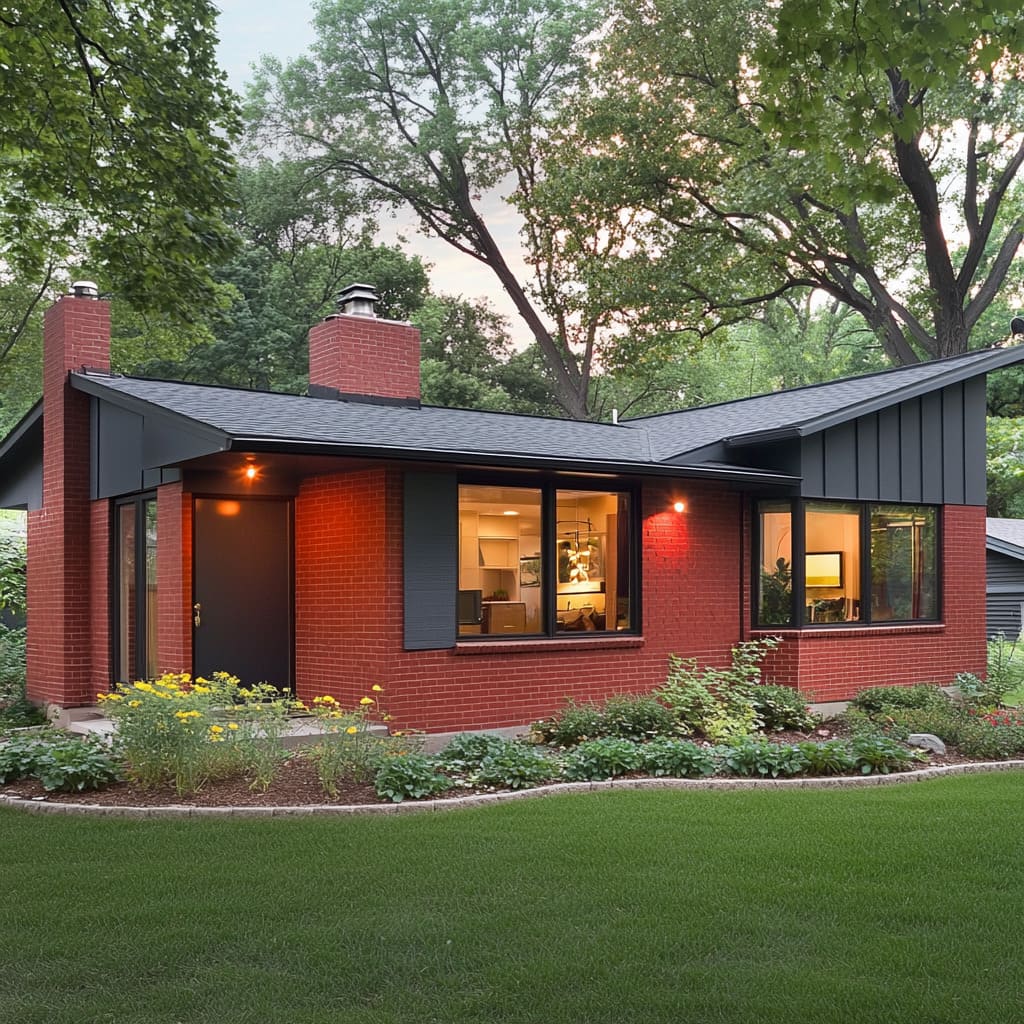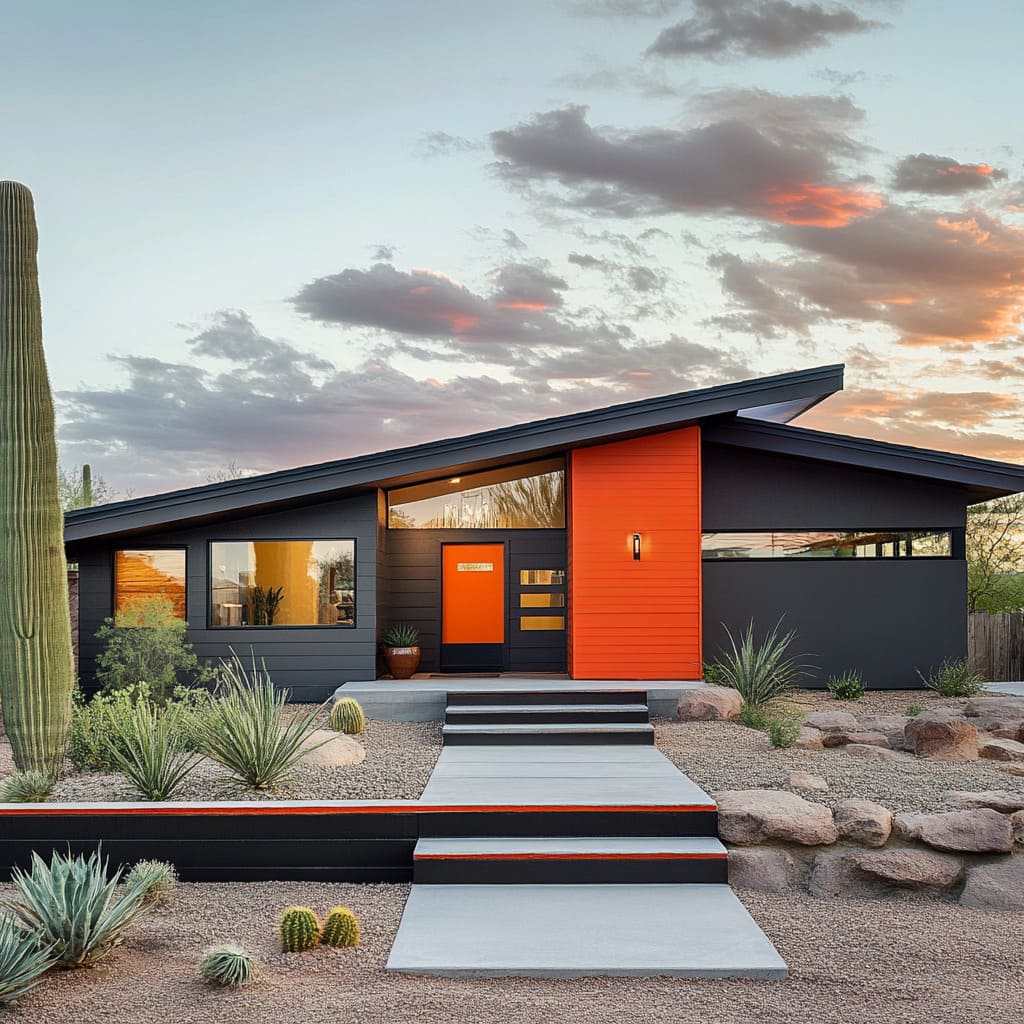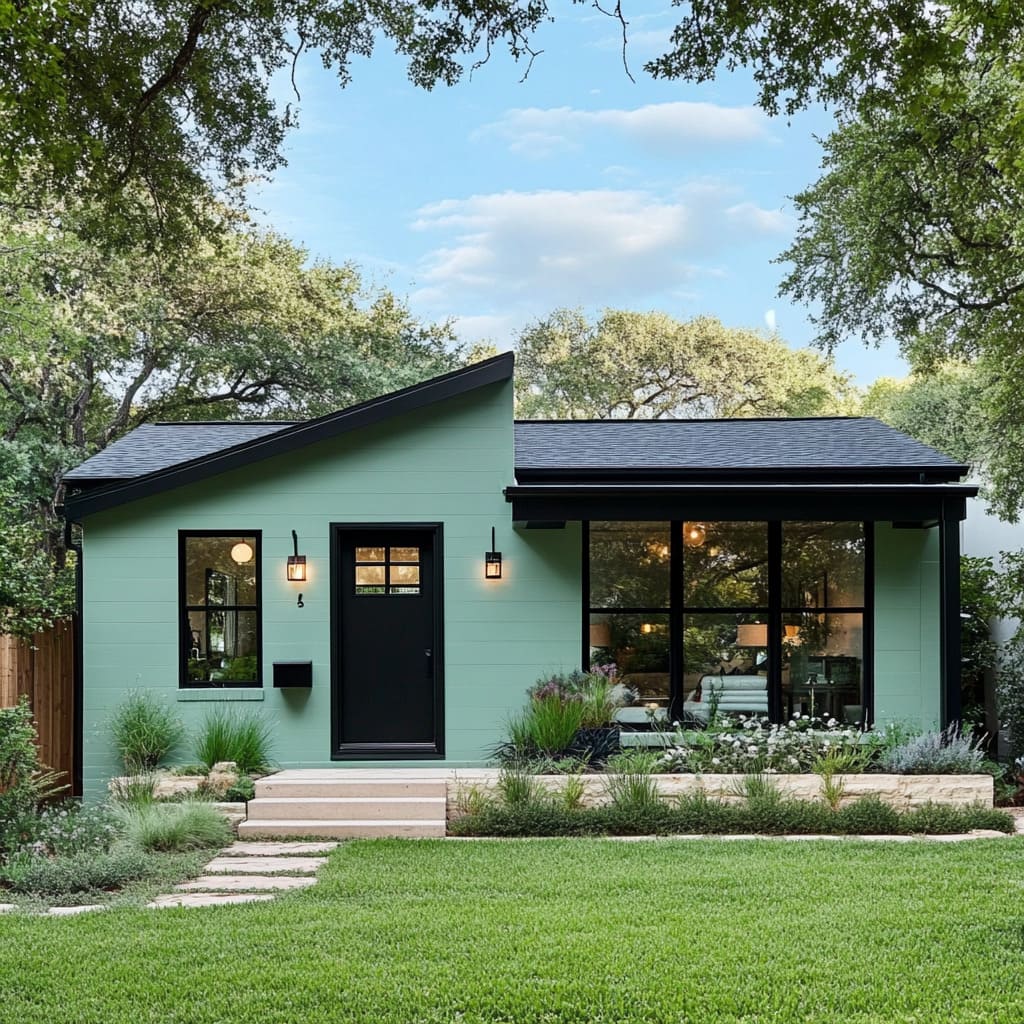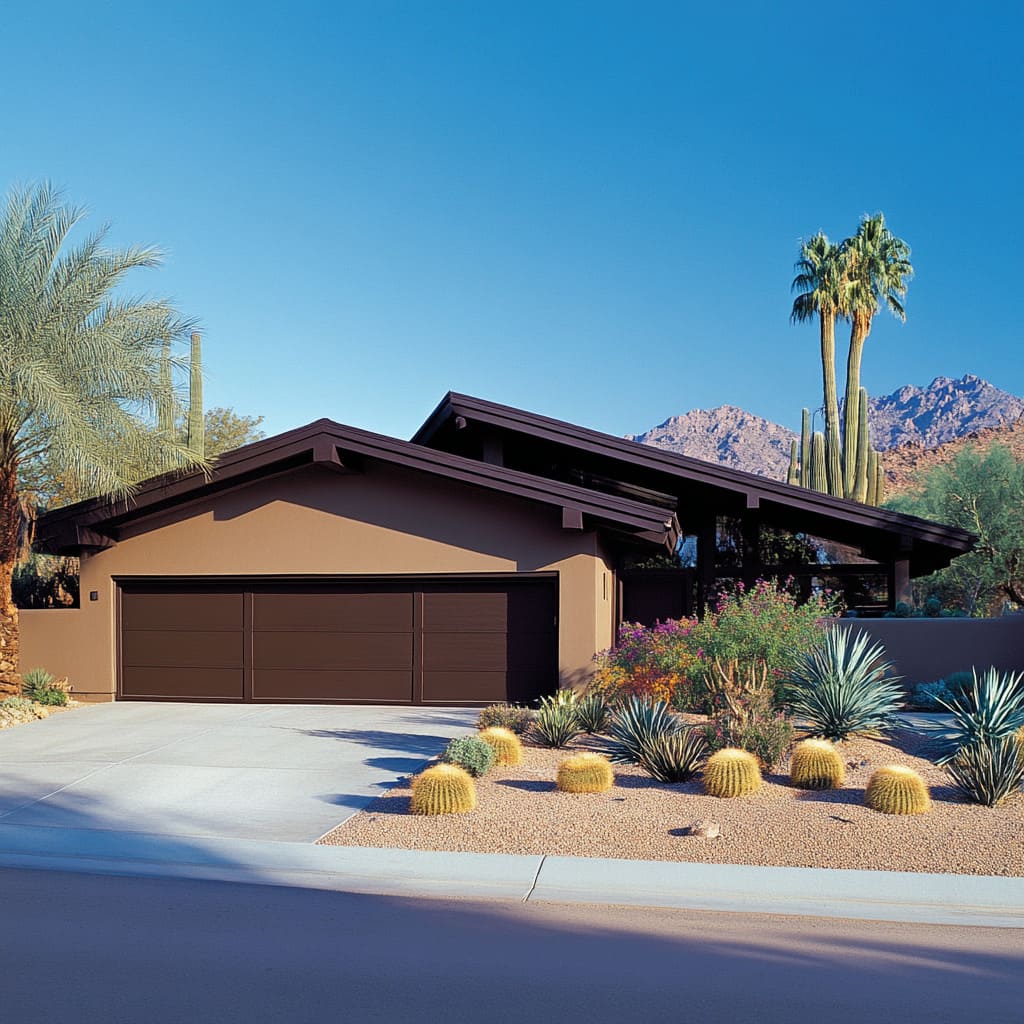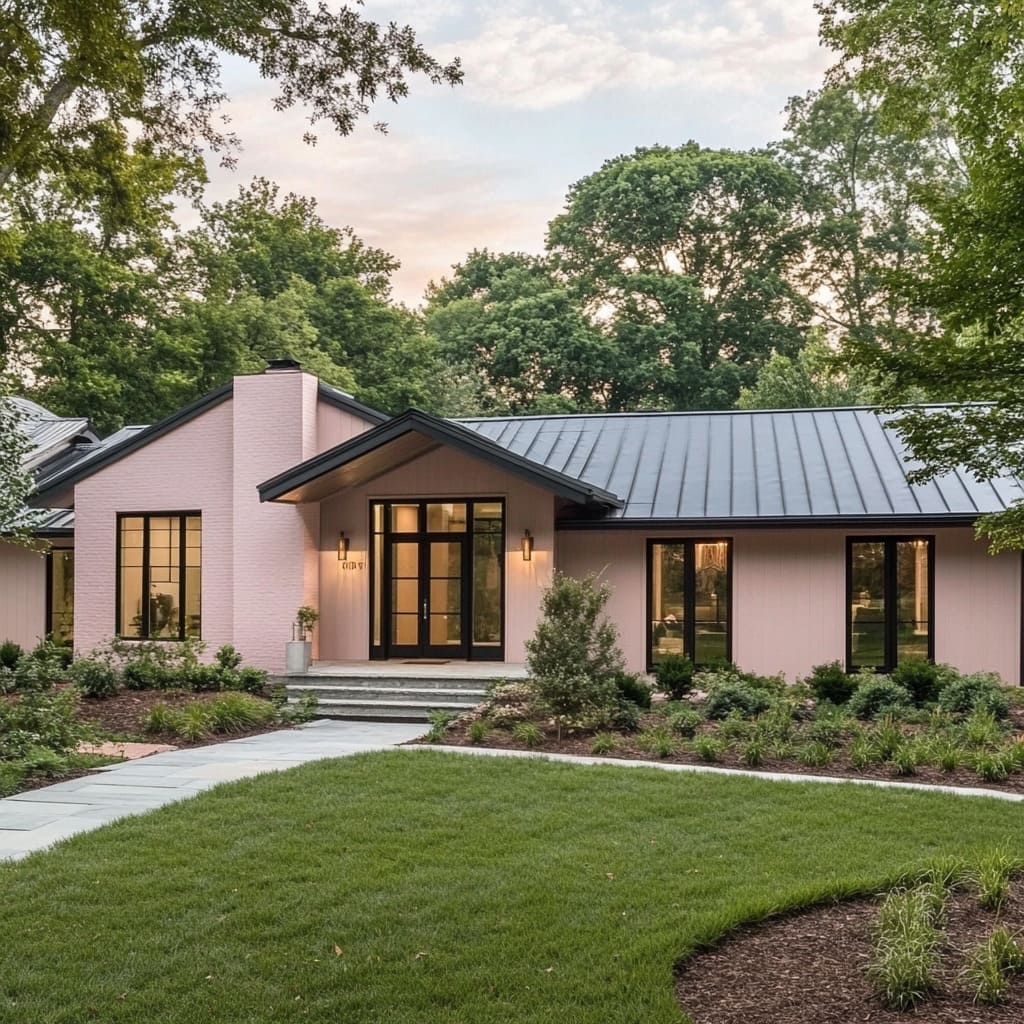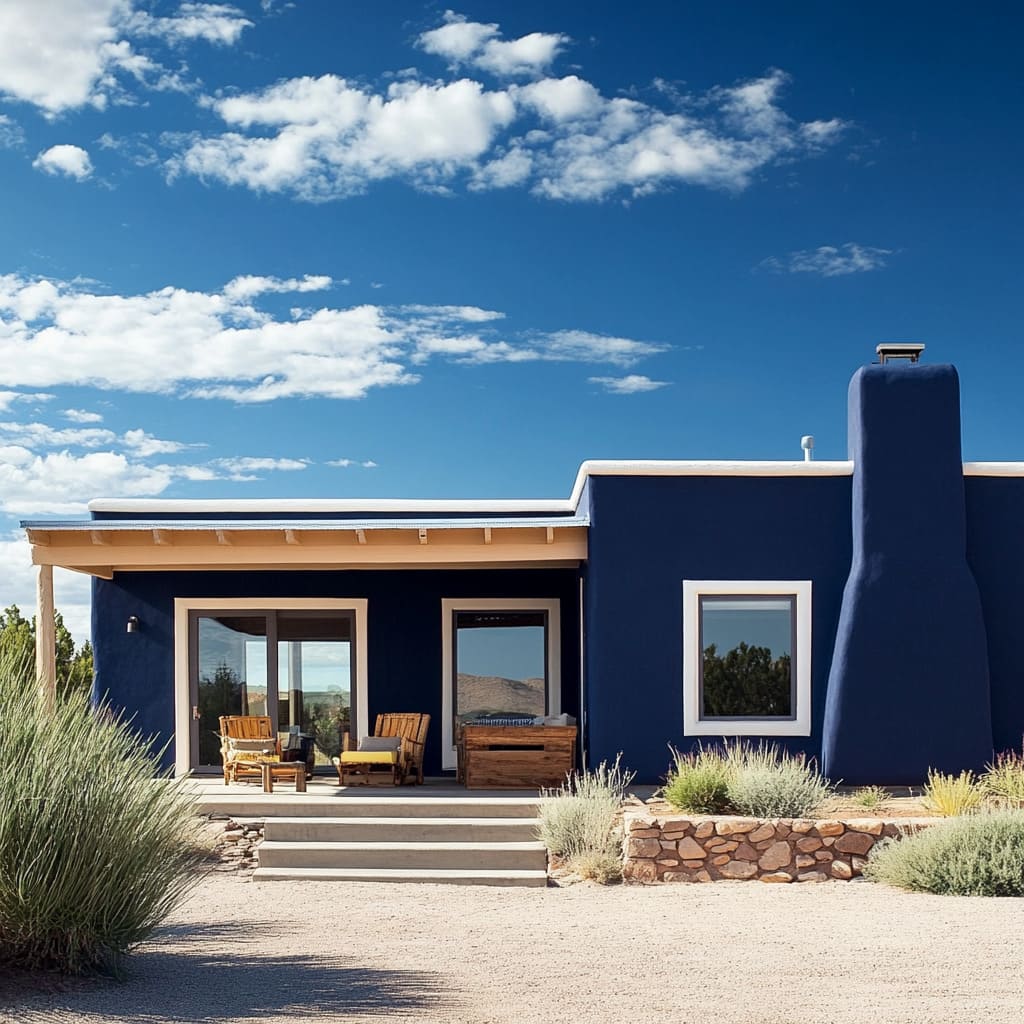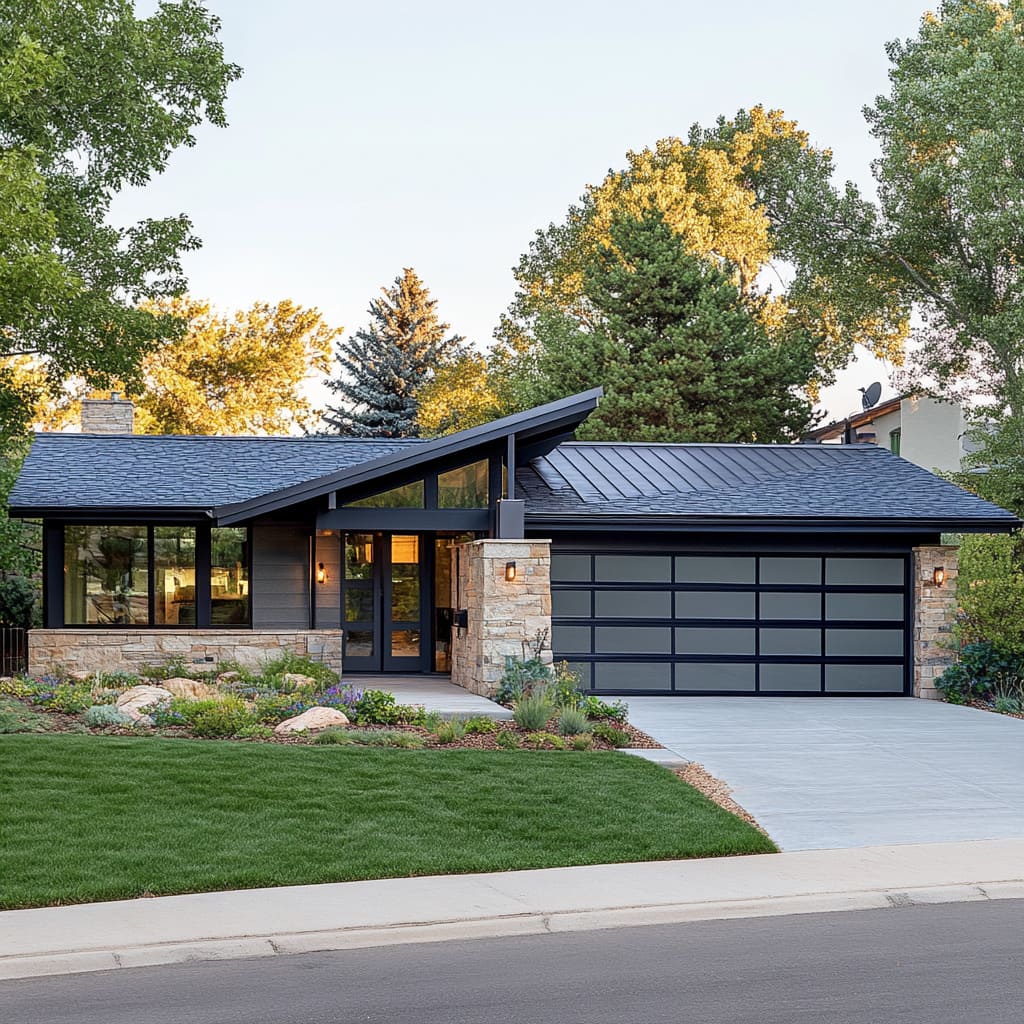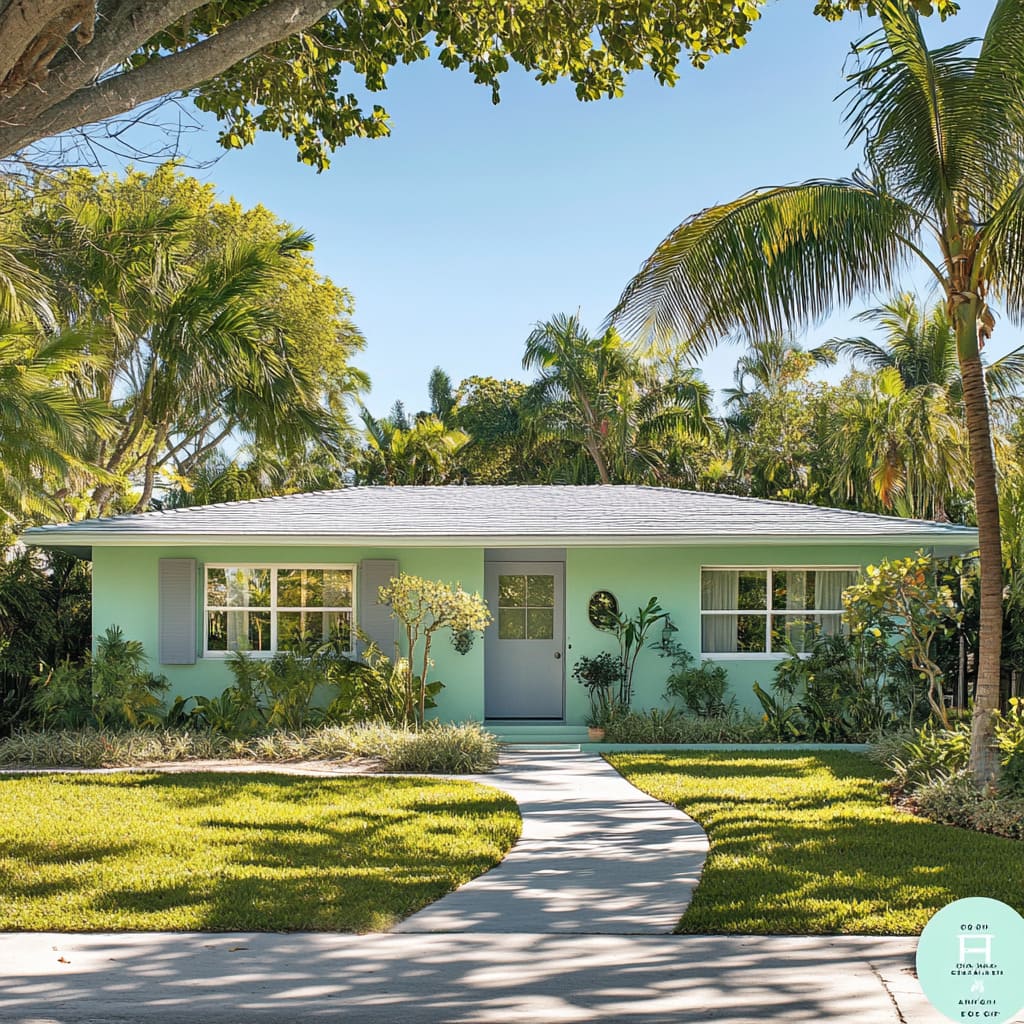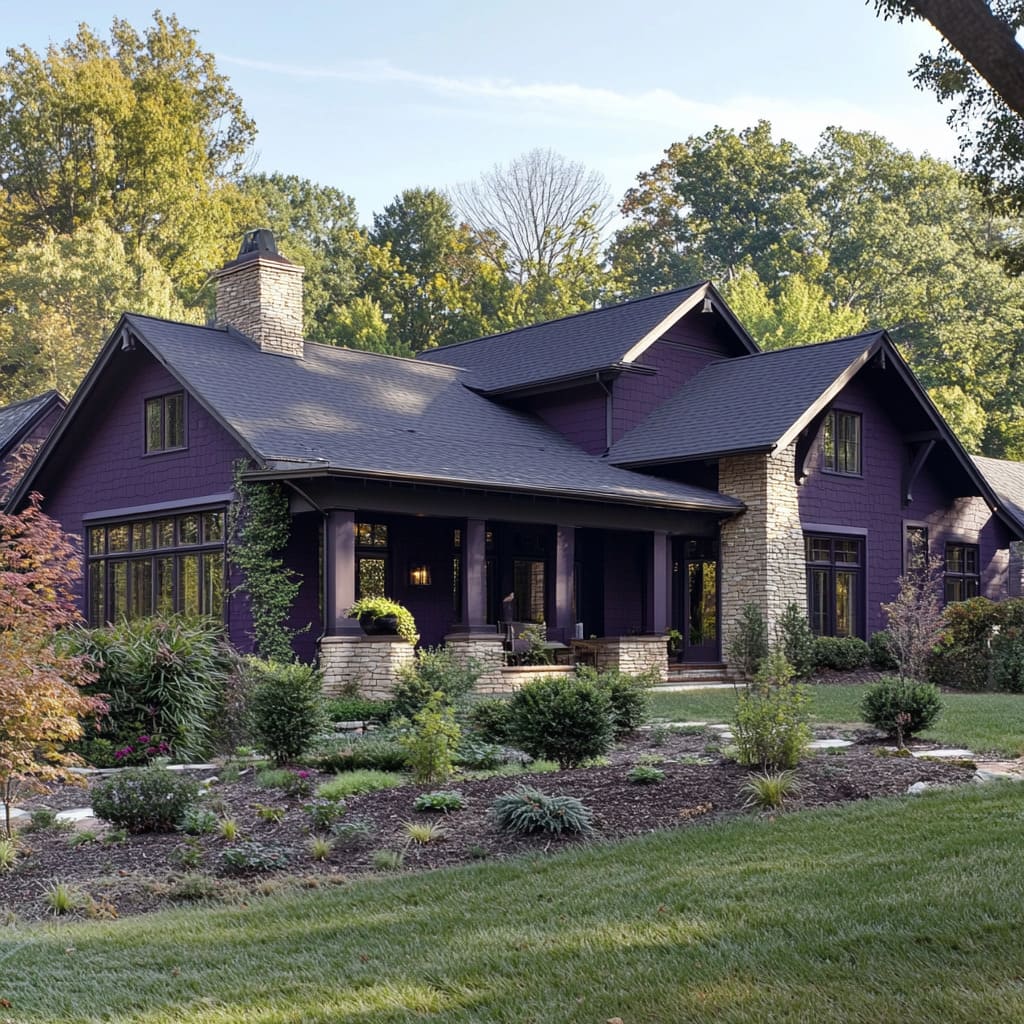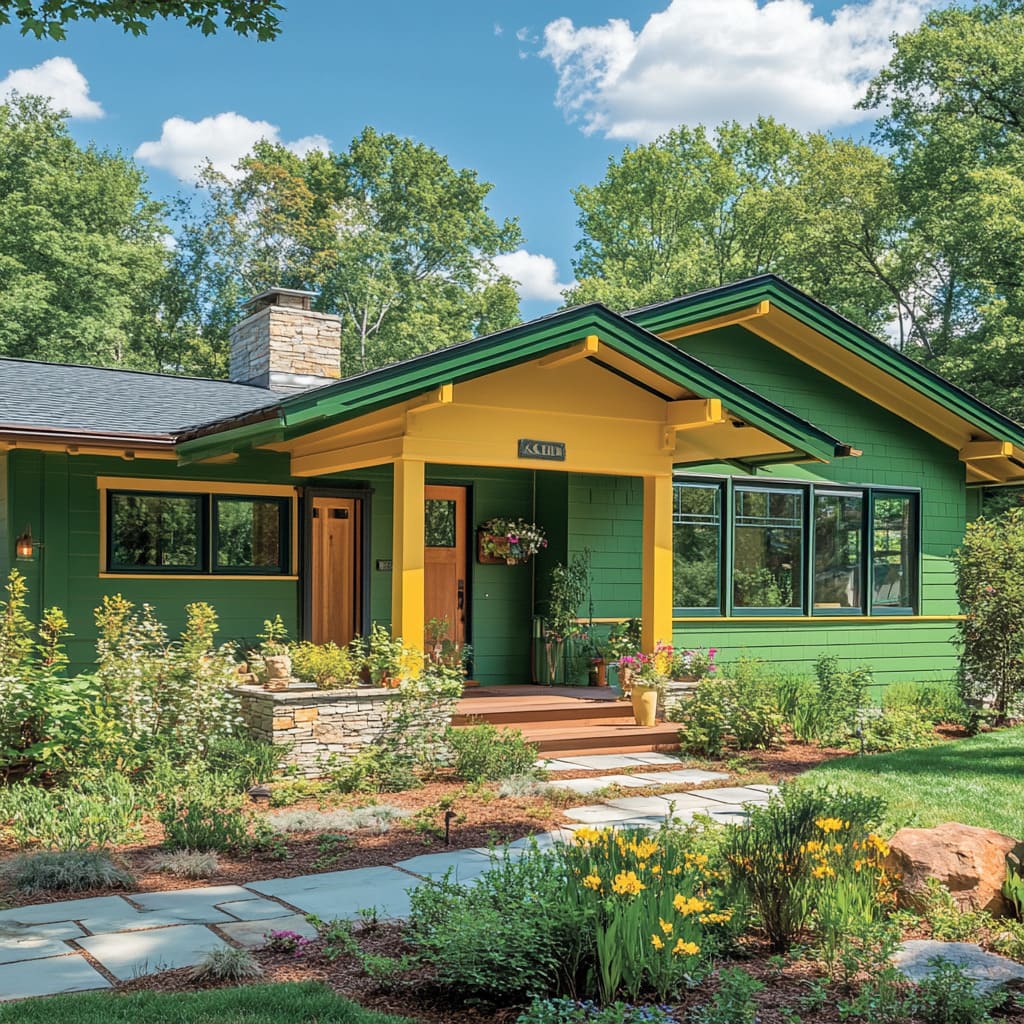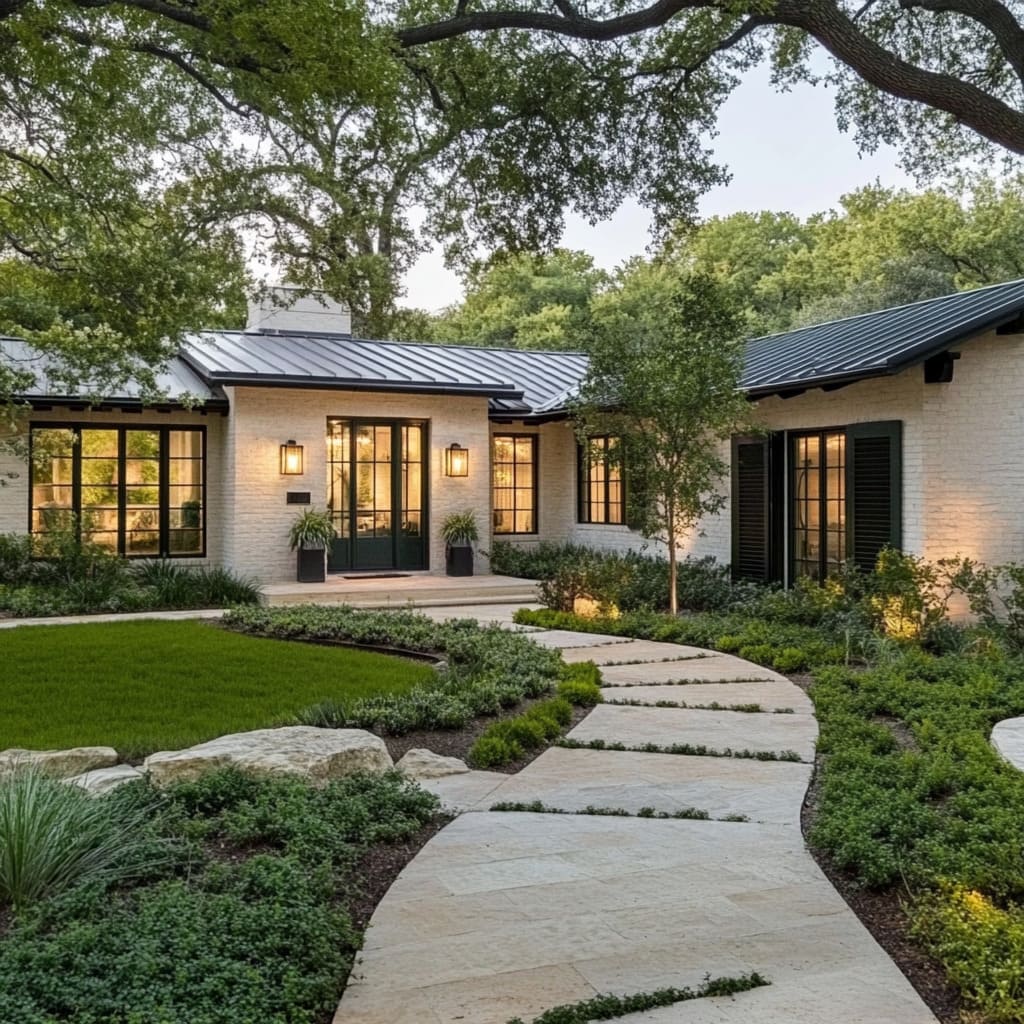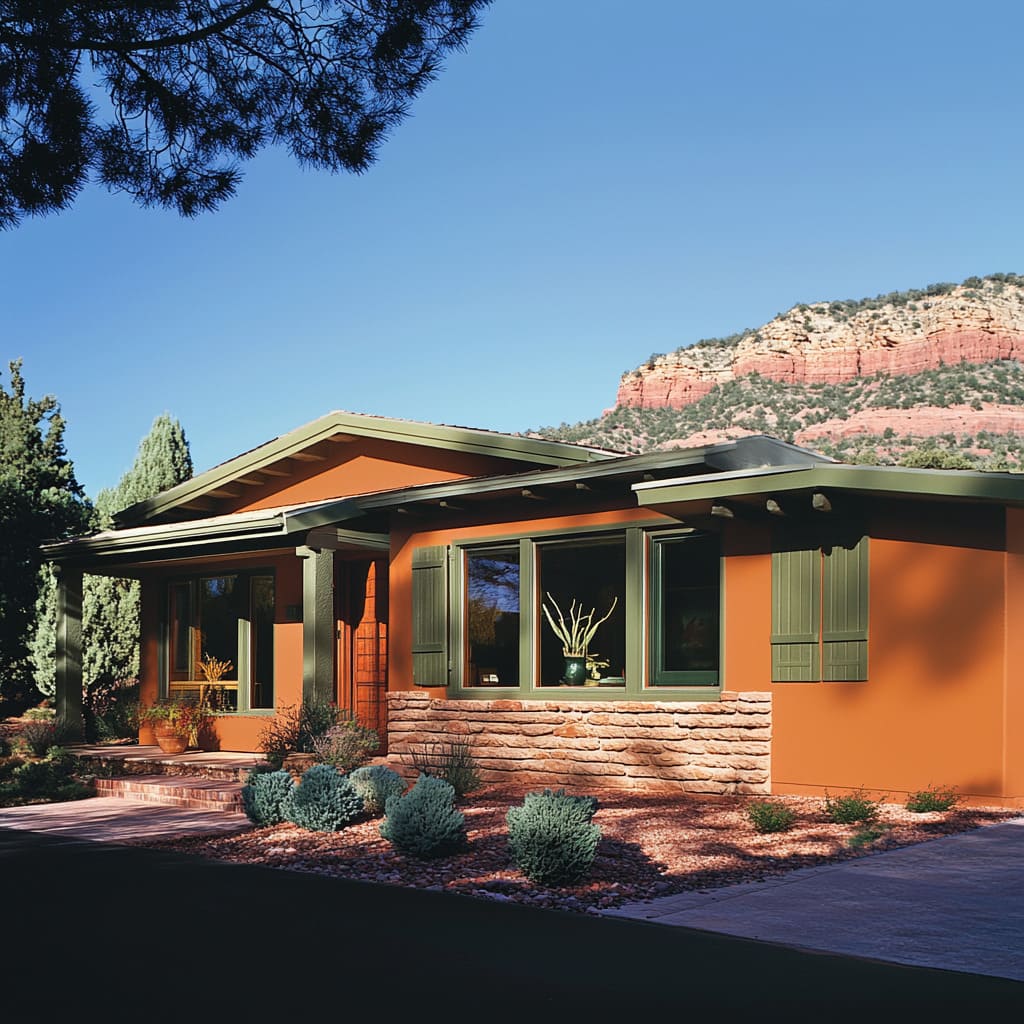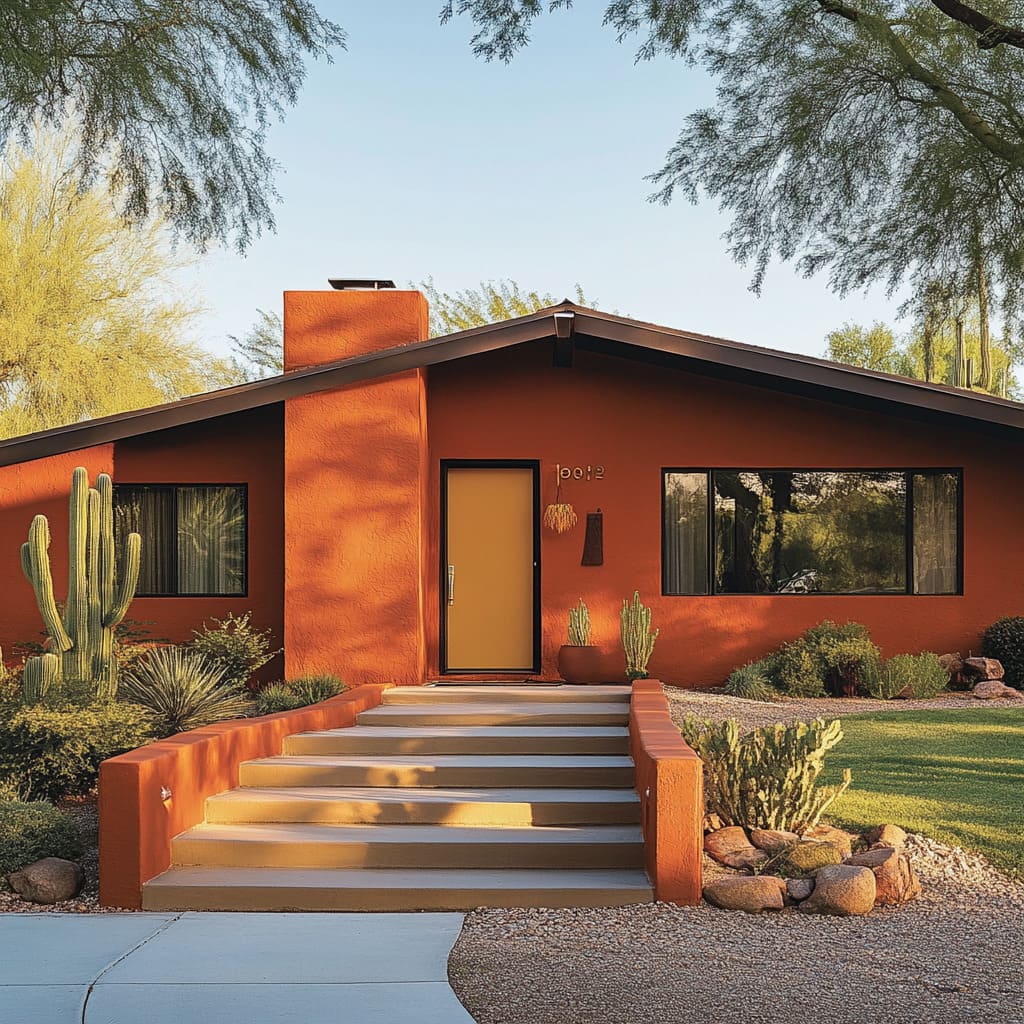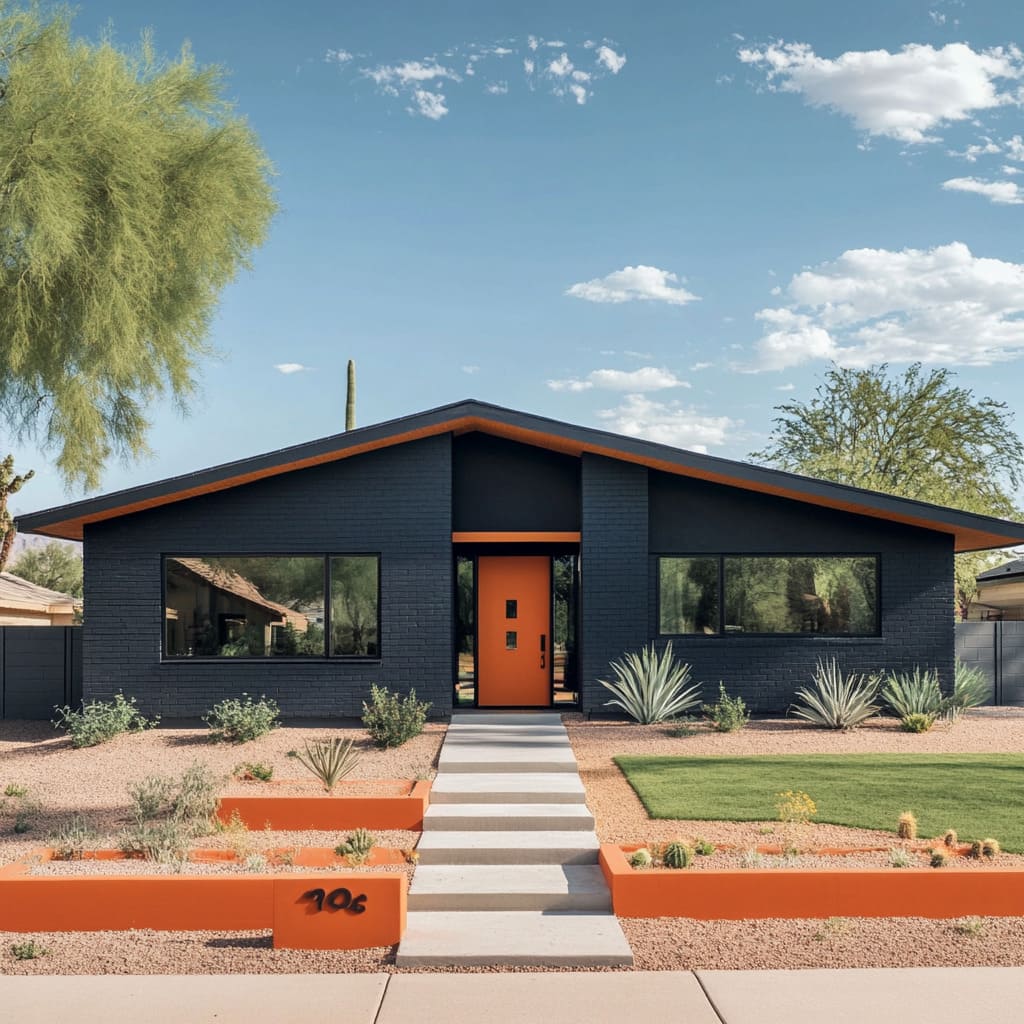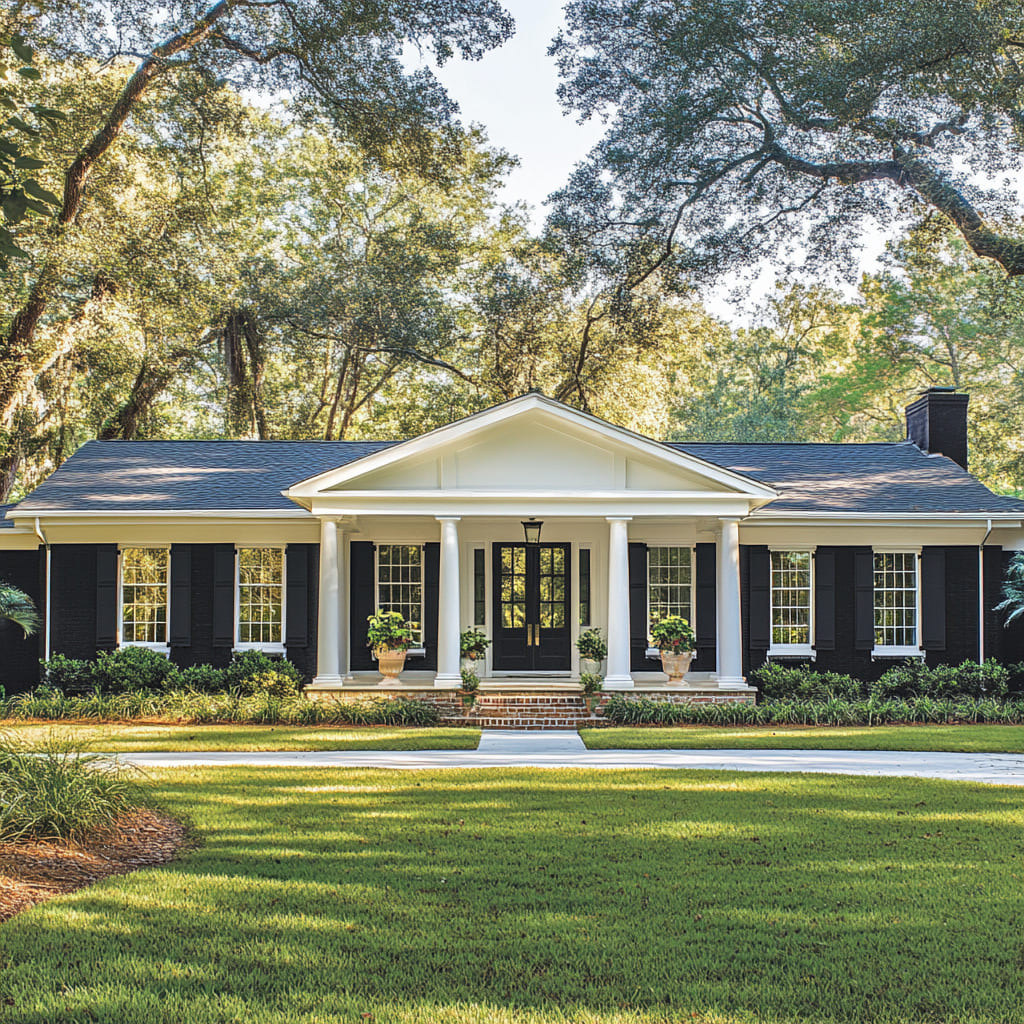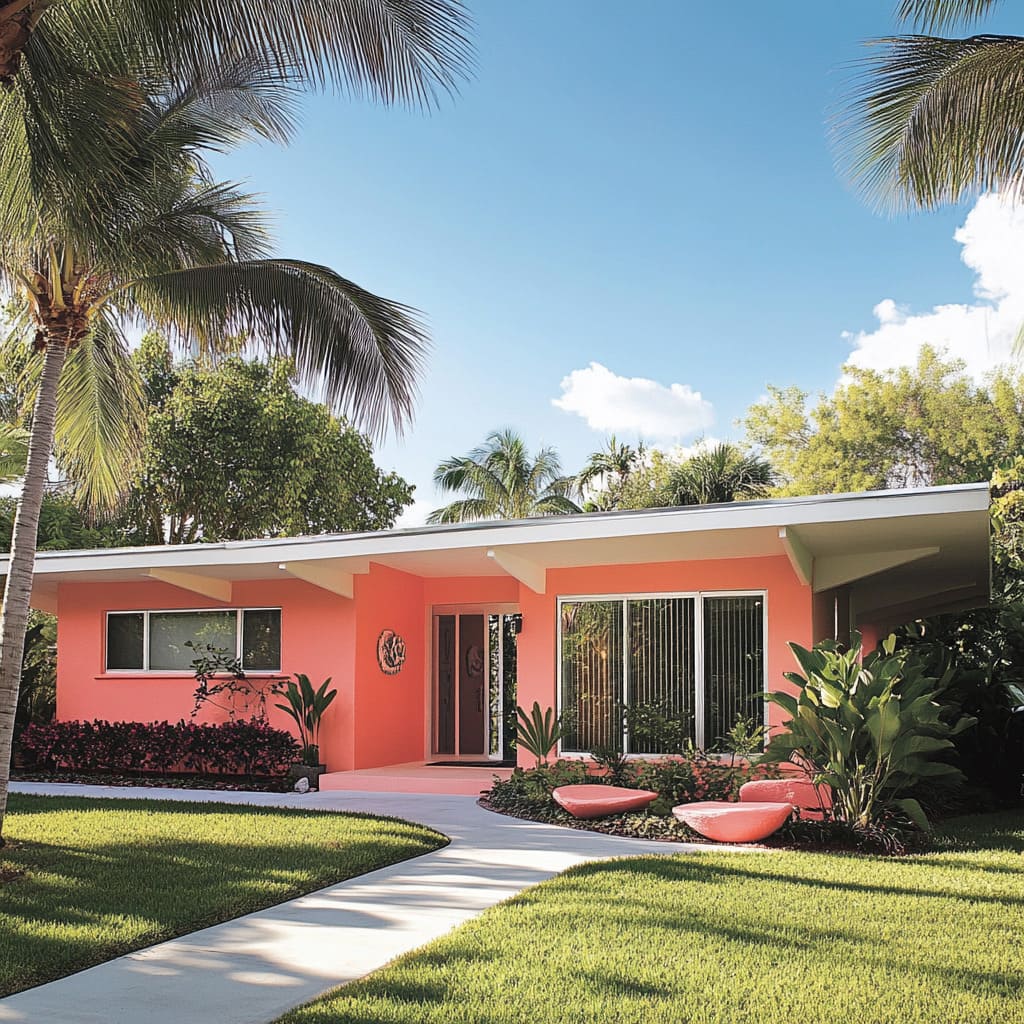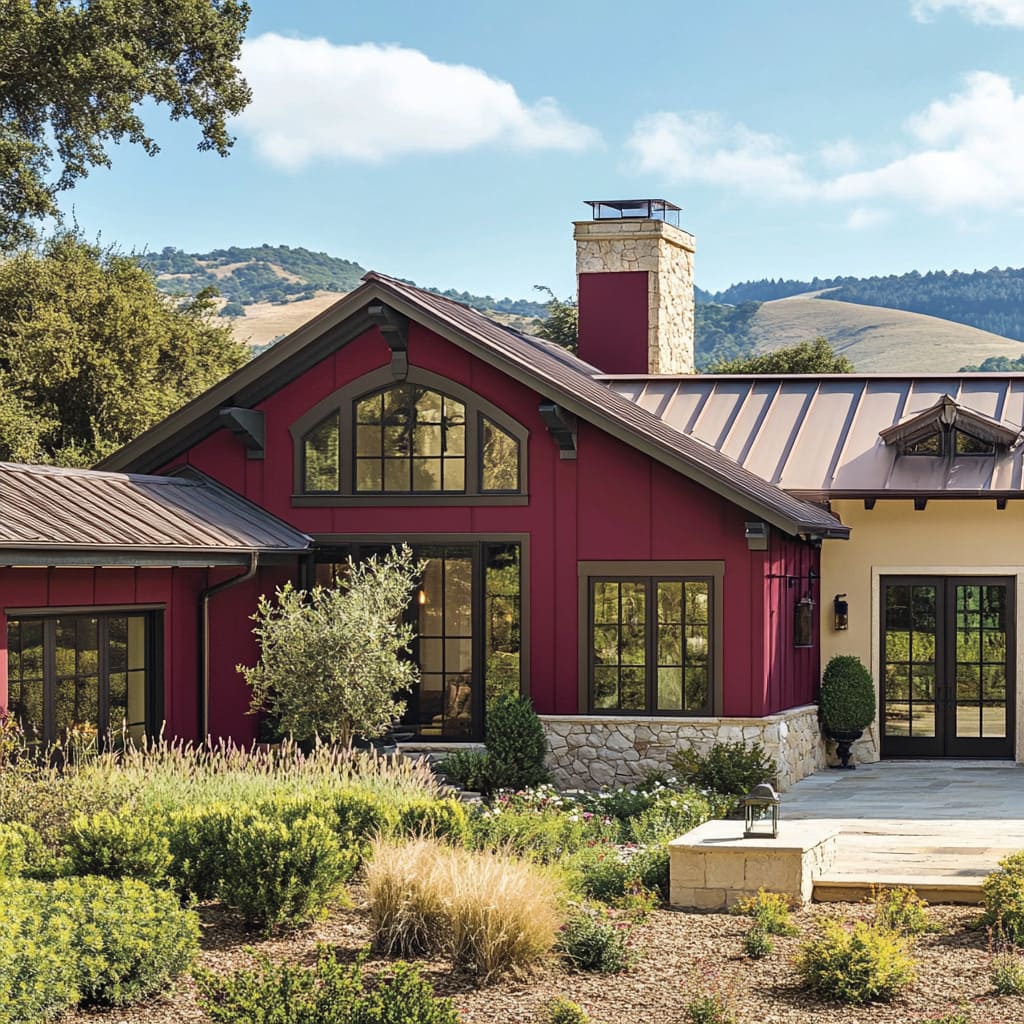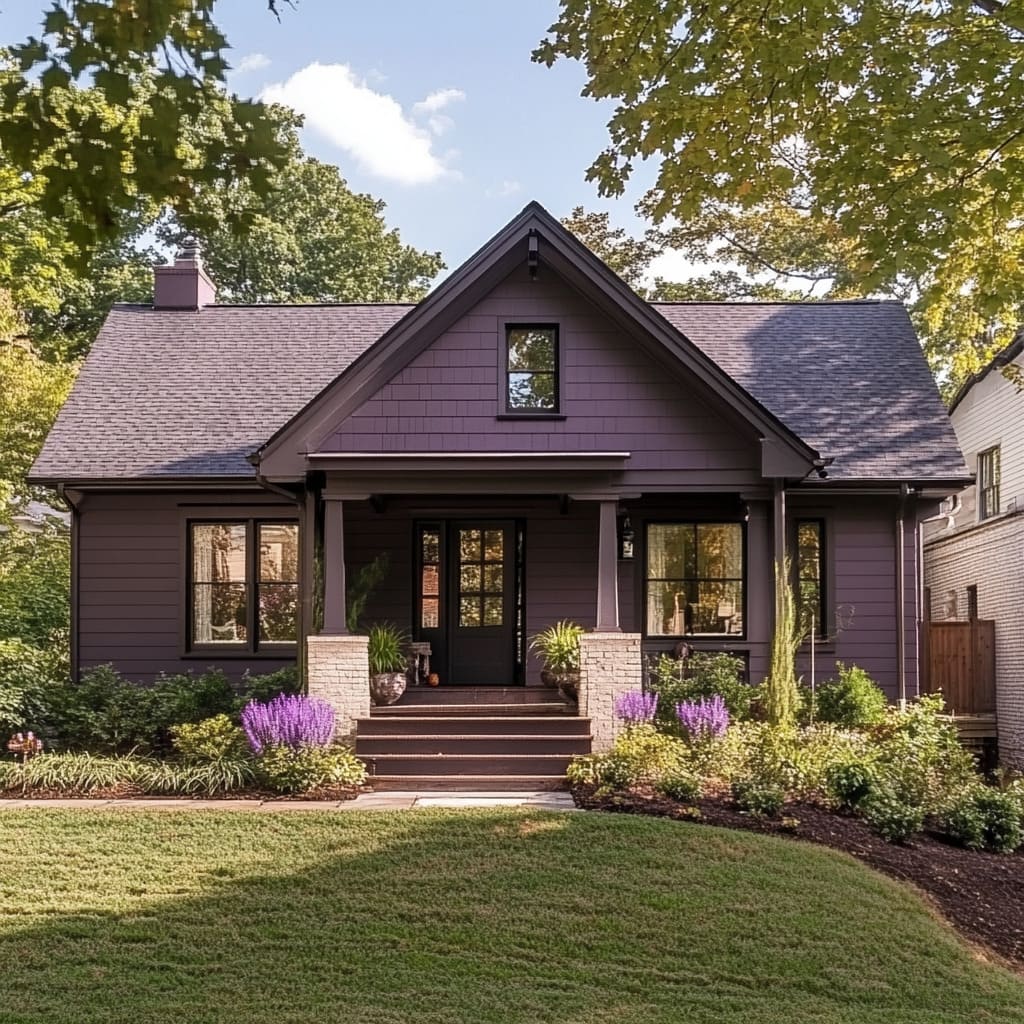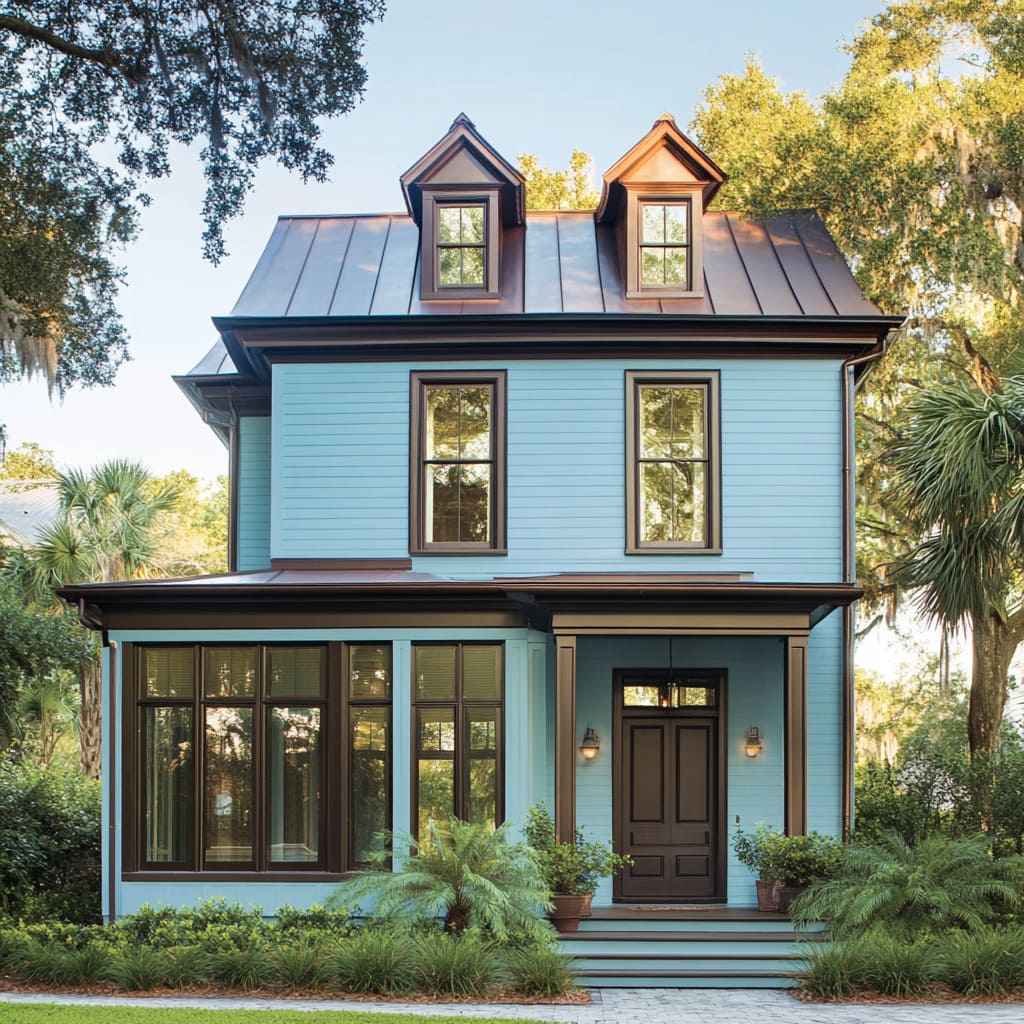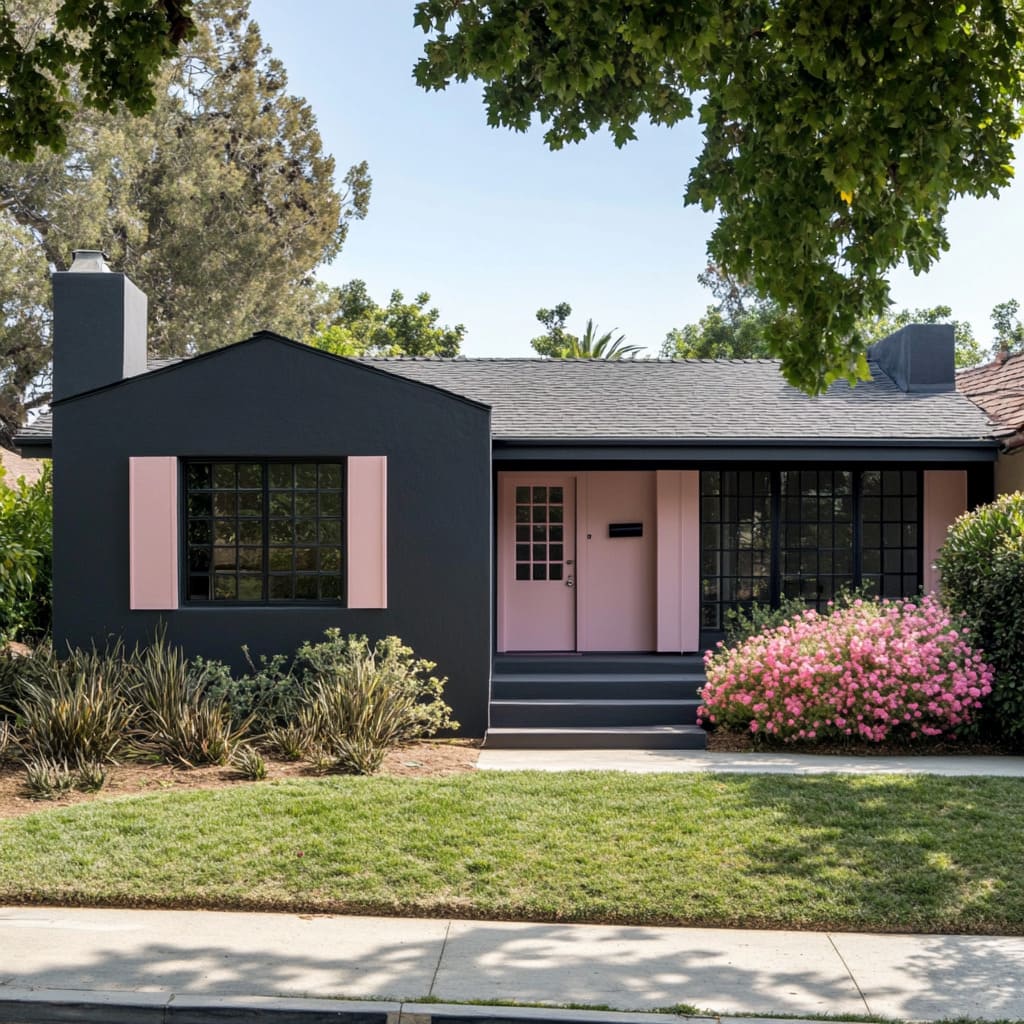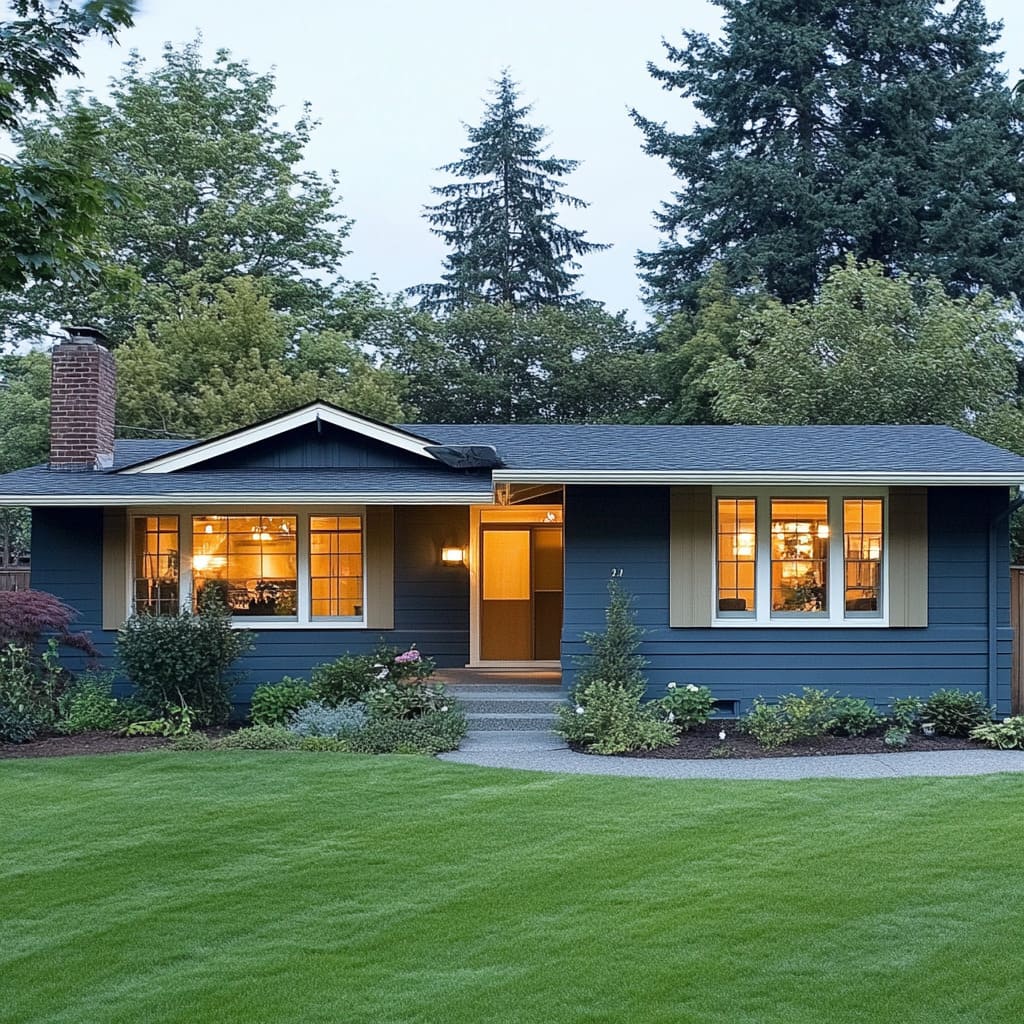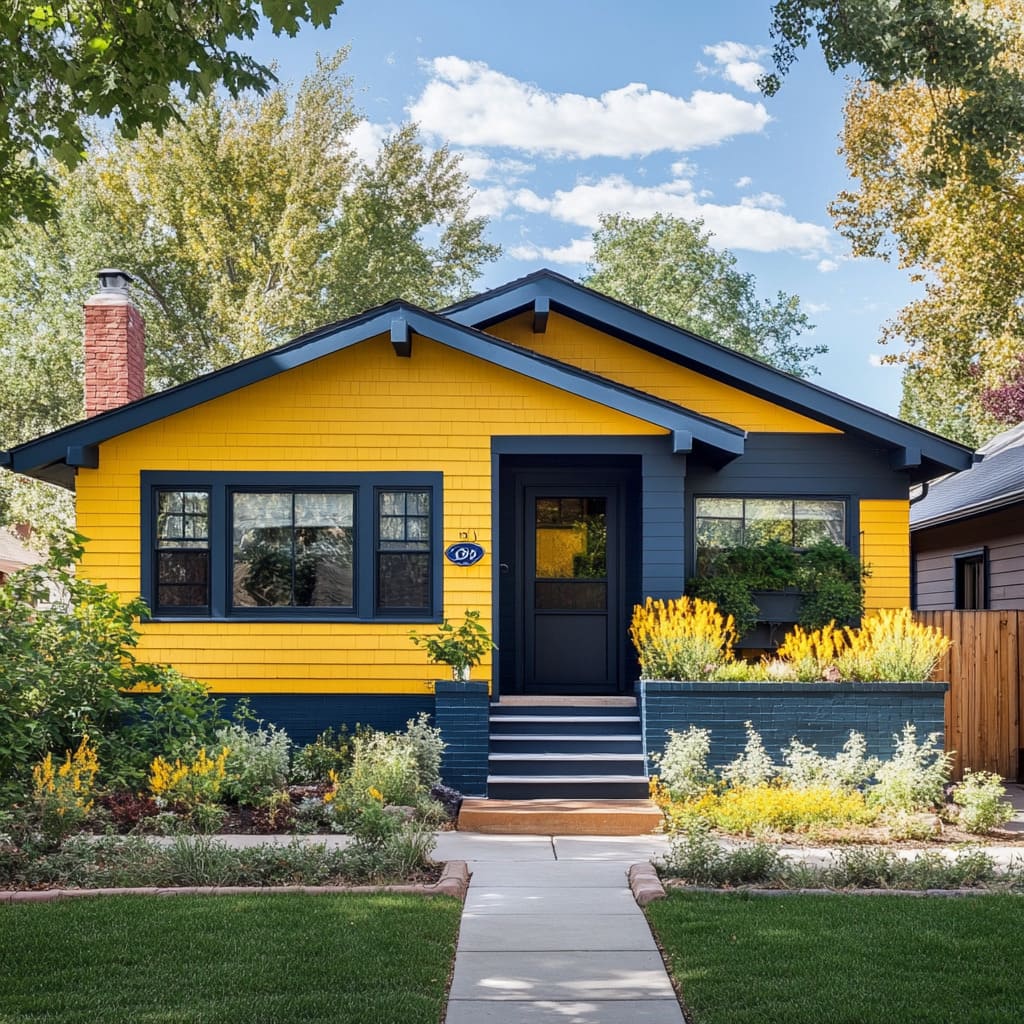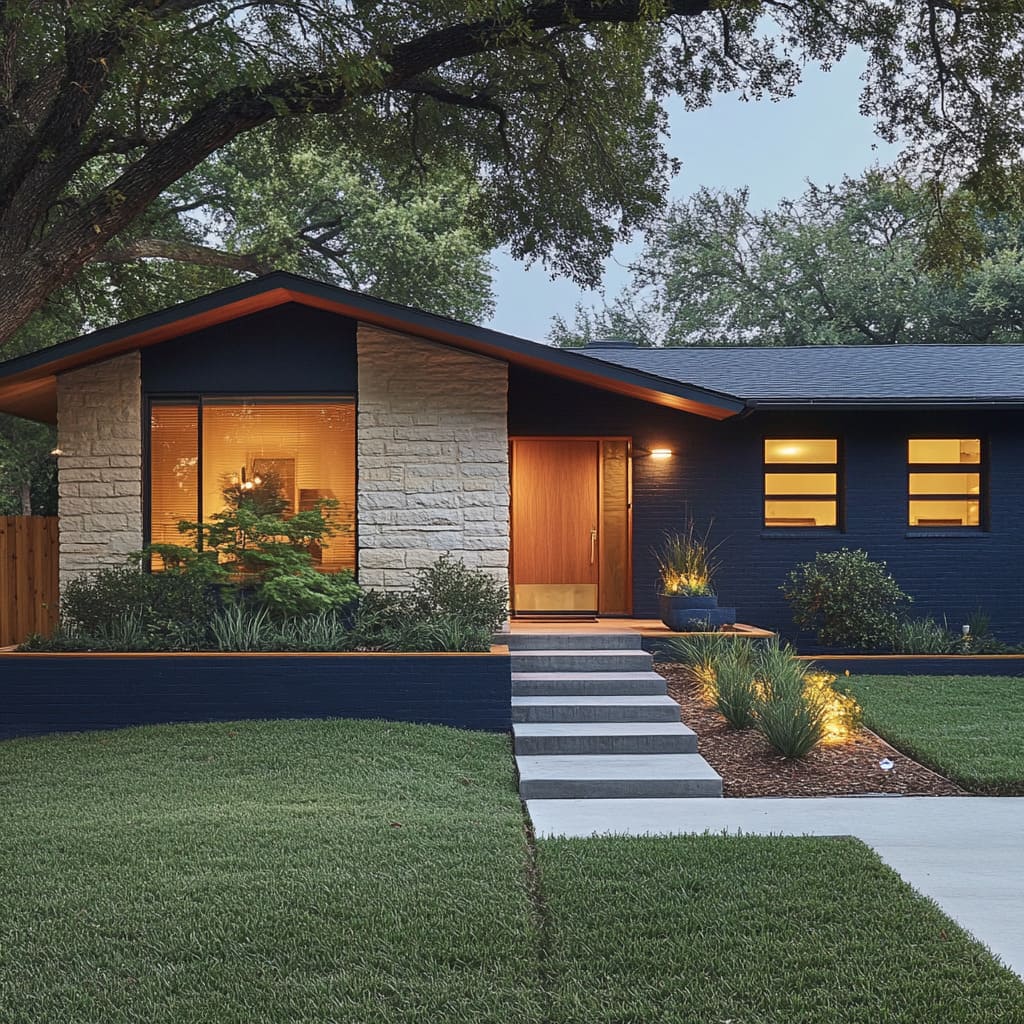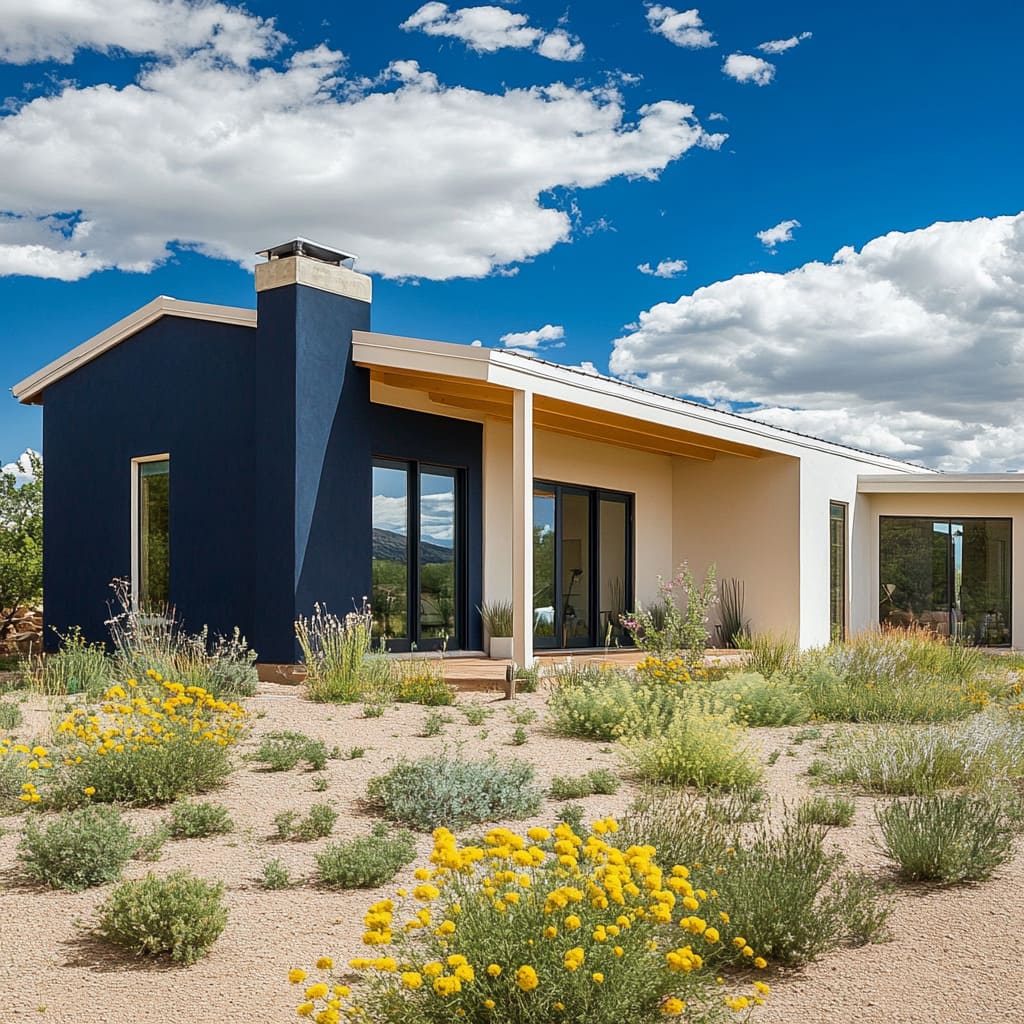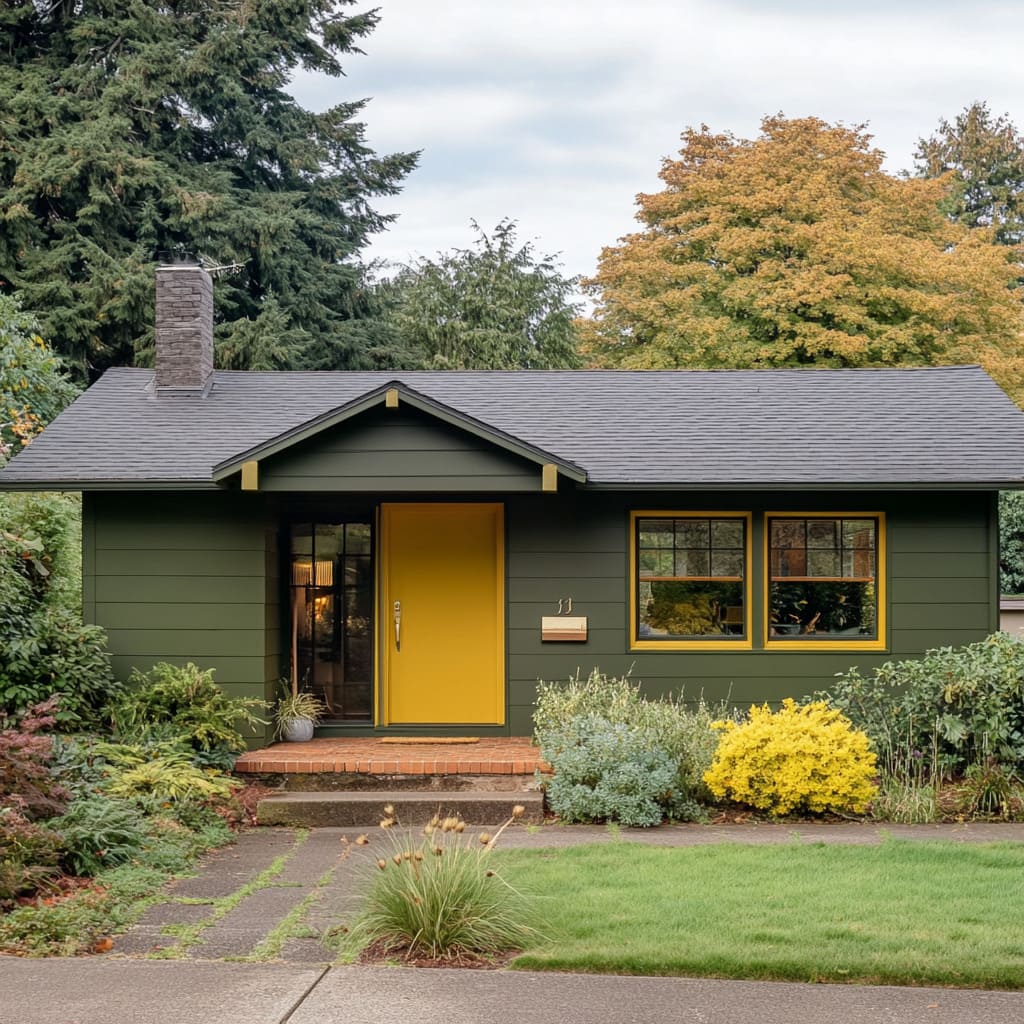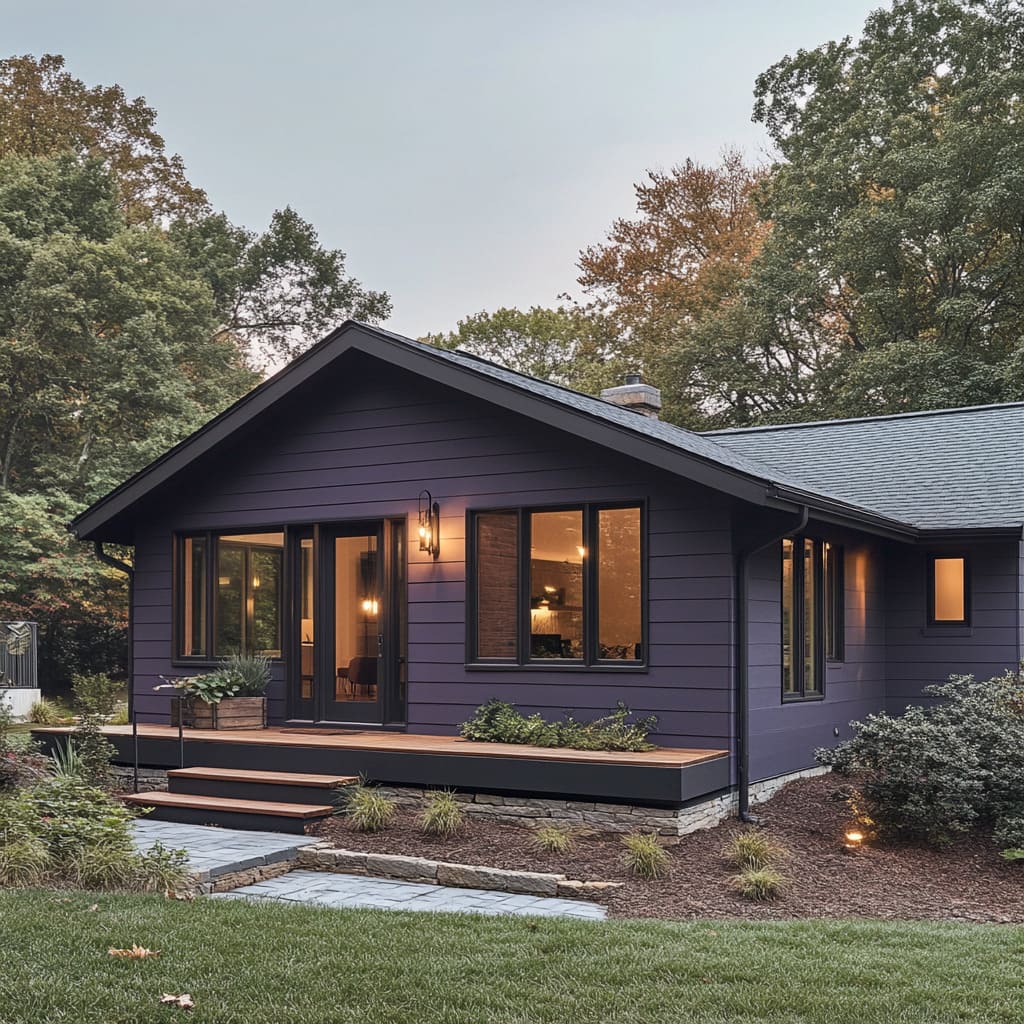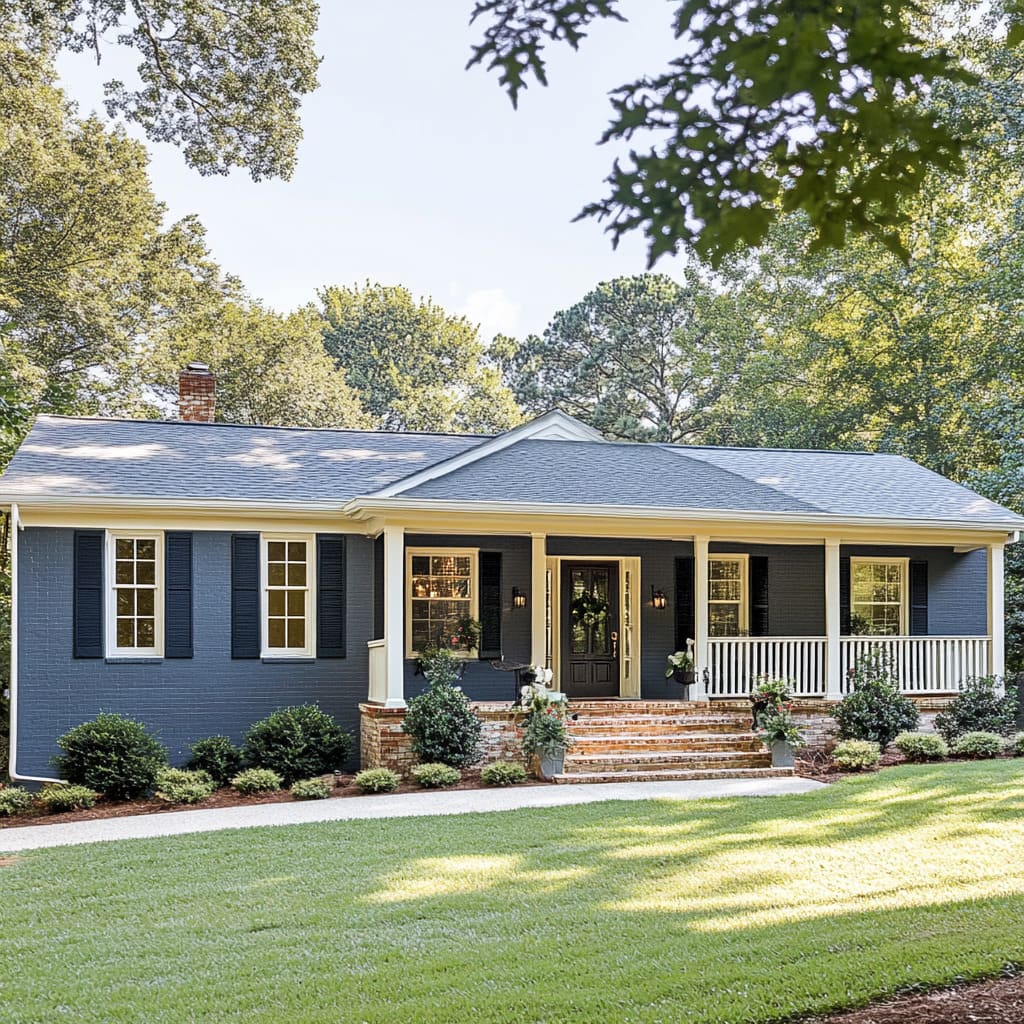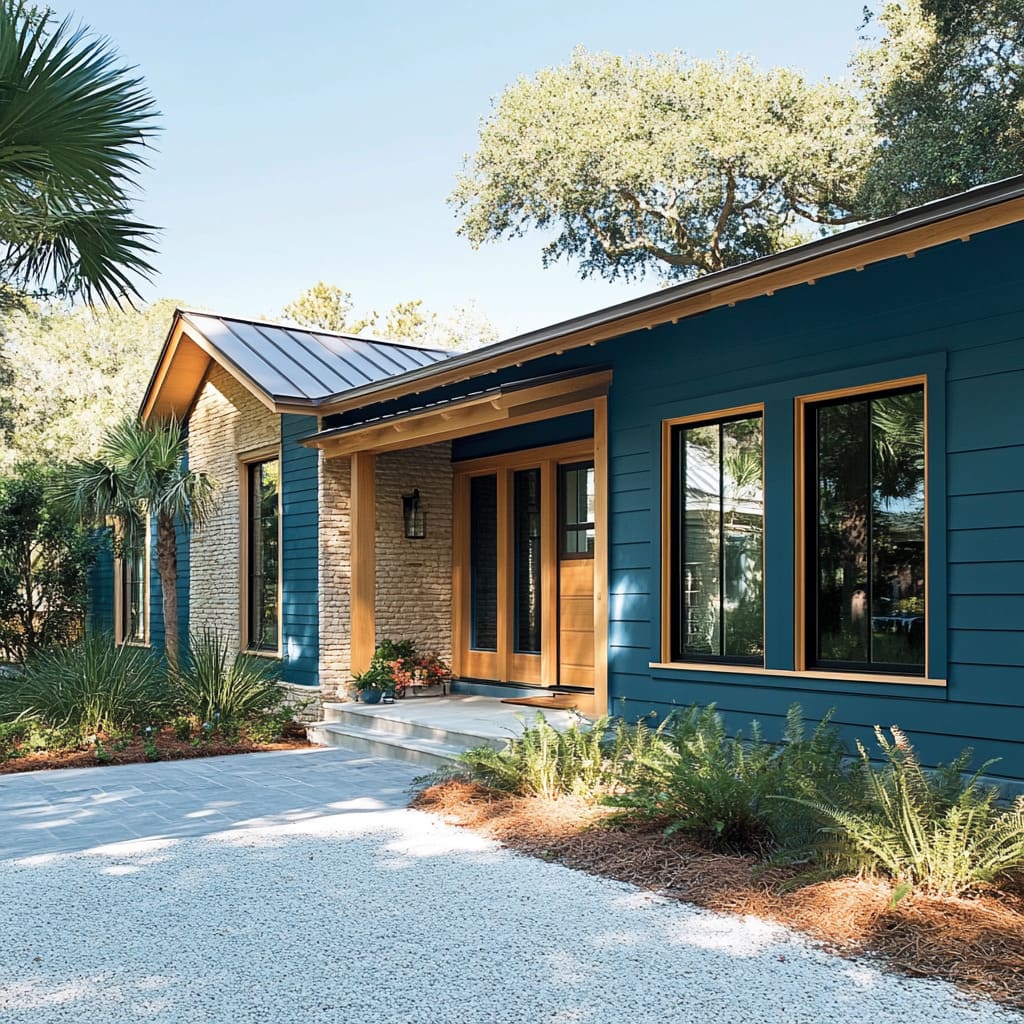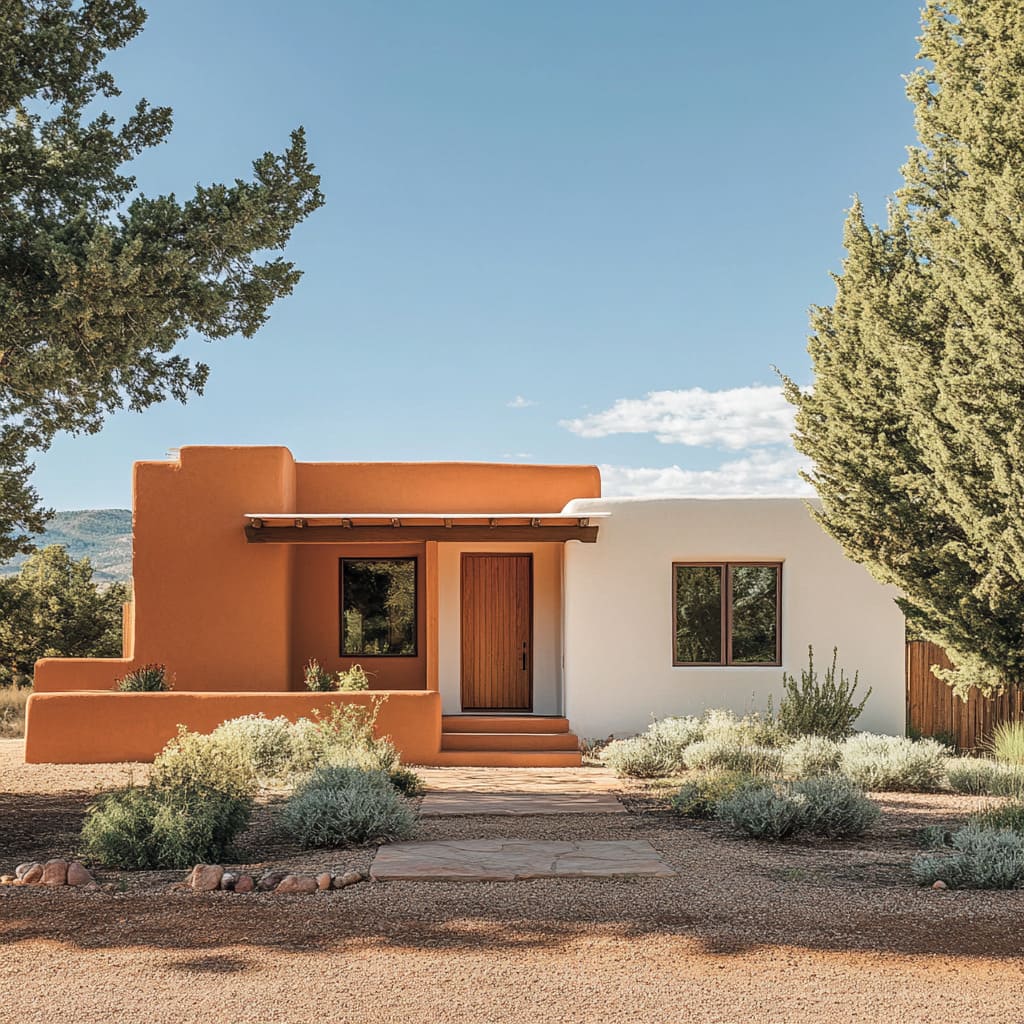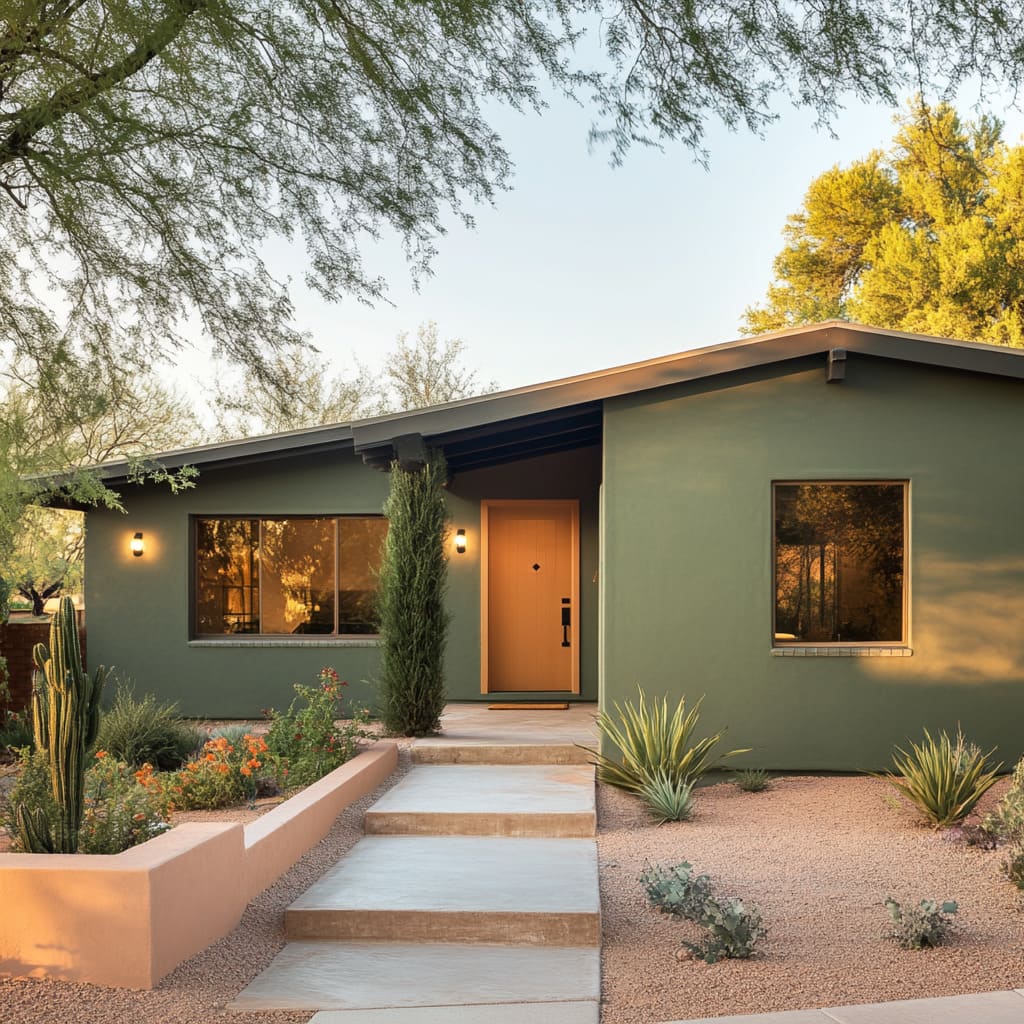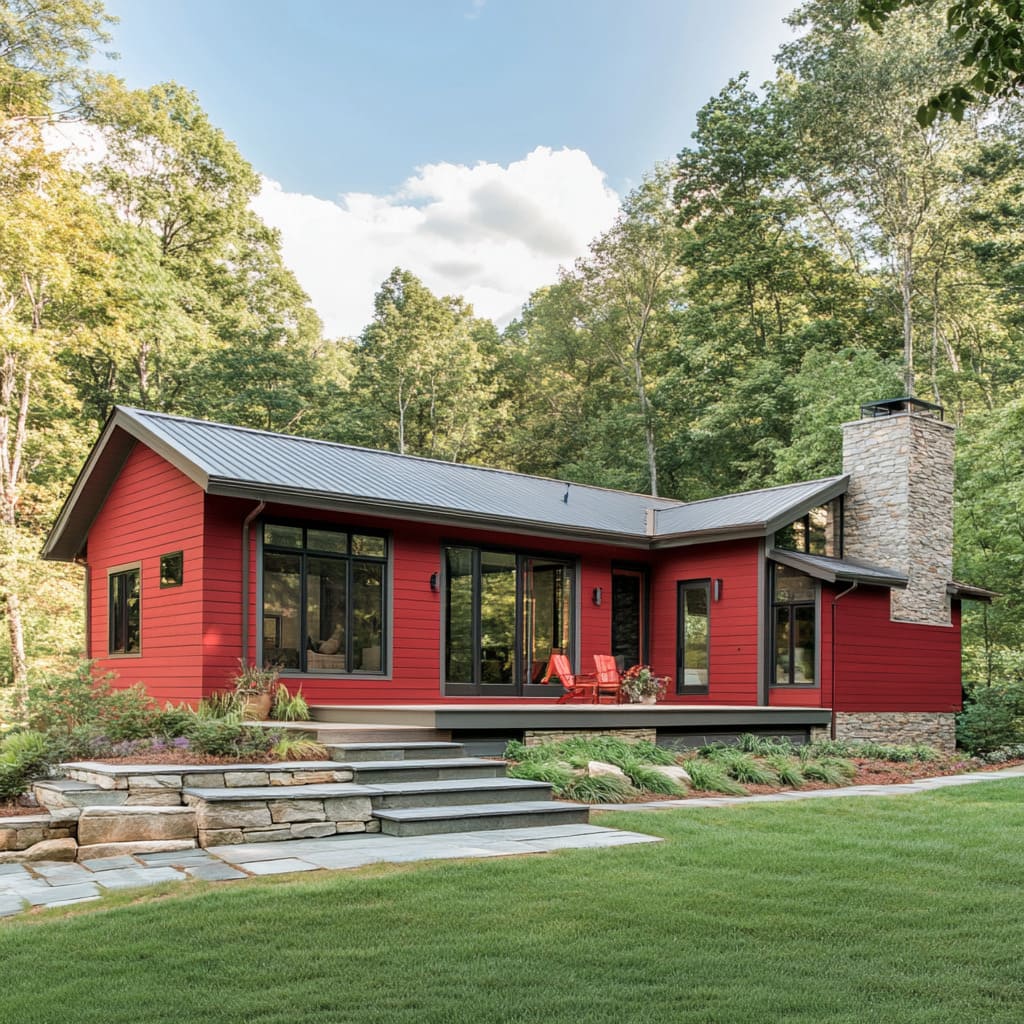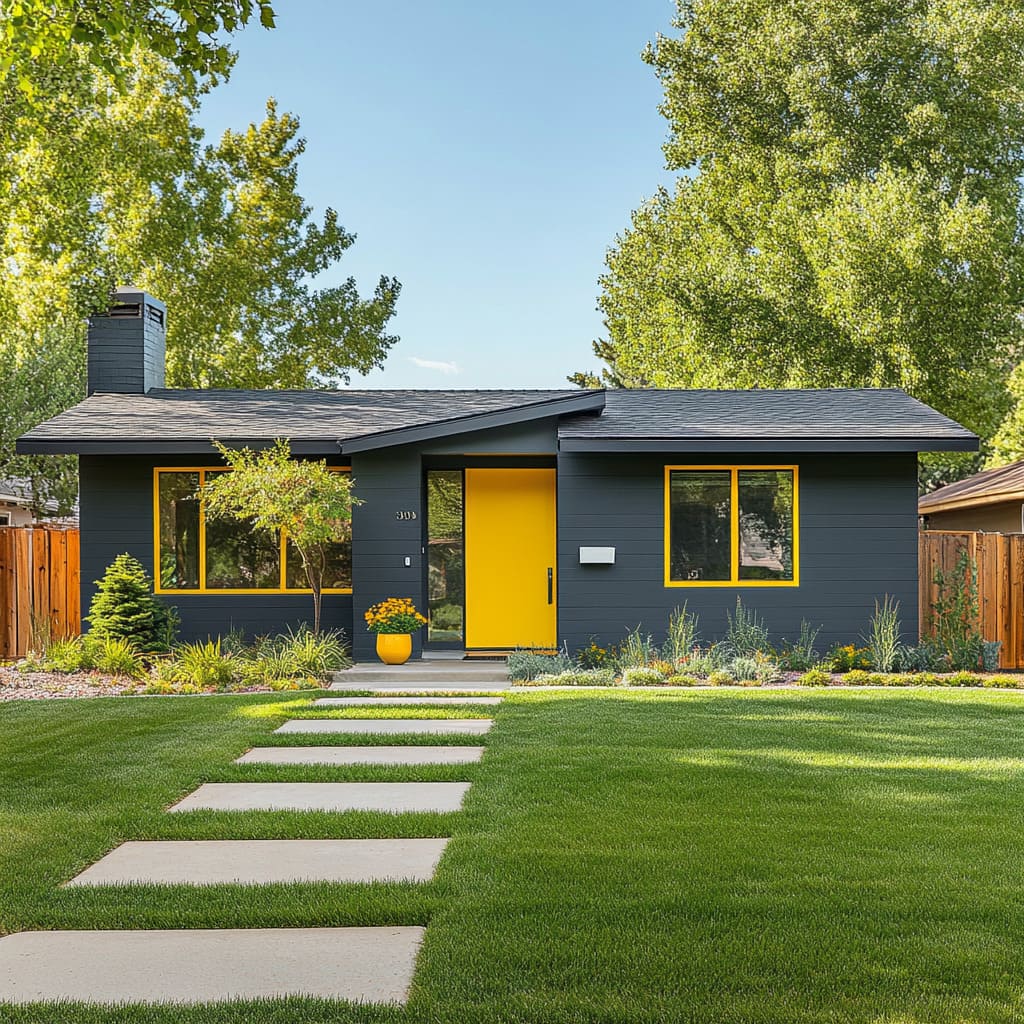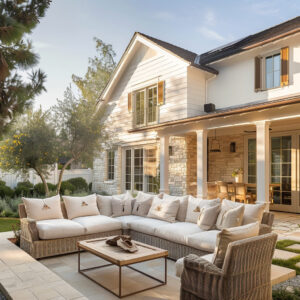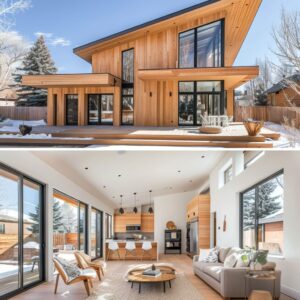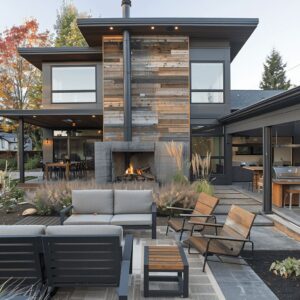Overview of Ranch-Style Homes
Ranch-style homes, often recognized for their simplicity and functional design, have been a staple in American architecture since their rise in popularity during the mid-20th century. Originating in the 1920s, these homes were inspired by the simple, practical buildings found on early Western ranches.
They gained immense popularity post-World War II, as suburban expansion led to the need for affordable and efficiently constructed homes. With their single-story layout, open floor plans, and strong connection to the outdoors, ranch home designs offer a blend of comfort and accessibility that has kept them a favorite among homeowners for decades
The appeal of ranch-style homes lies in their versatility and the ease with which they can be personalized. Whether you’re looking for a cozy family retreat or a more modern and sleek design, these homes can be adapted to fit various lifestyles and tastes.
Their long, low profile and expansive windows make them ideal for maximizing natural light and creating an indoor-outdoor living experience, which is especially valued in regions with mild climates. The practical layout also allows for easy expansion, making ranch-style homes a flexible choice for growing families or those who love to entertain
Importance of Color Schemes in Ranch House Renovations: One of the most impactful ways to transform a ranch-style house is through the thoughtful selection of color schemes. The exterior color of a home not only defines its aesthetic appeal but also influences its harmony with the surrounding environment.
Choosing the best exterior colors for ranch-style homes can greatly enhance their curb appeal and bring out the architectural details that define this style
For instance, a muted color palette can highlight the simplicity and understated elegance of a traditional ranch-style house, while bold, contrasting colors can give the home a modern twist, making it stand out in the neighborhood. When selecting ranch home color schemes, it’s essential to consider how different hues will interact with elements like the roof, landscaping, and any stone or brickwork
Color also plays a crucial role in setting the mood and tone of the home. Earthy tones like olive green or terracotta can create a warm, inviting atmosphere, reflecting the natural surroundings.
On the other hand, cooler tones like slate gray or navy blue offer a more contemporary look, lending a sense of modernity to the traditional design. Accent colors can be used strategically to draw attention to features such as shutters, the front door, or front porch designs for ranch houses, adding personality and character to the overall design
Understanding Ranch-Style Architecture
Key Characteristics of Ranch-Style Homes
Ranch-style homes are known for their distinctive architectural features, which include a single-story layout, a low-pitched roof, an open floor plan, and large windows that allow natural light to flood the interior spaces. These homes often feature a long, horizontal profile that hugs the landscape, creating a seamless transition between indoor and outdoor living areas.
The integration with the landscape is a key element of ranch-style house remodeling, as it emphasizes the connection to nature and outdoor spaces
The single-story layout of ranch homes is particularly appealing to homeowners who value accessibility and convenience. With all rooms on one level, these homes offer easy navigation and a sense of openness that is often lacking in multi-story houses.
This layout also allows for a more cohesive flow between different living areas, making the home feel larger and more connected
The low-pitched roof, another hallmark of ranch-style architecture, not only contributes to the home’s sleek, horizontal appearance but also enhances its structural stability. This type of roof is designed to withstand various weather conditions, making it a practical choice for homeowners in diverse climates.
Large windows are a signature feature of ranch homes, allowing for abundant natural light and providing expansive views of the surrounding landscape. These windows help to blur the boundaries between indoor and outdoor spaces, creating a sense of openness and bringing the beauty of the outdoors inside
Preserving the Classic Elements
When renovating a ranch-style house, it’s important to preserve the classic elements that define this architectural style while updating the home to meet contemporary needs and tastes. Maintaining the single-story layout and low-pitched roof is essential to retaining the home’s original character.
Additionally, keeping the open floor plan intact ensures that the home remains functional and inviting, with spaces that flow naturally into one another
Preserving the large windows and their connection to the outdoor environment is also crucial in any ranch home renovation. These windows not only provide aesthetic value but also play a significant role in the home’s energy efficiency by maximizing natural light and reducing the need for artificial lighting.
Incorporating modern amenities and design elements can be done in a way that complements the home’s traditional features rather than overshadowing them. For example, updating the kitchen or bathroom with contemporary fixtures and finishes can add value and comfort to the home while still maintaining the integrity of the original design
In conclusion, understanding the key characteristics of ranch-style homes and the importance of preserving their classic elements is essential for any successful remodeling project. By carefully selecting color schemes and design updates that enhance the home’s natural beauty and architectural features, homeowners can create a space that is both timeless and uniquely their own
The Impact of Color on Ranch-Style Homes
The Role of Color in Enhancing Design
Color plays a crucial role in defining the character and aesthetic of any home, but its impact is especially significant in ranch-style house color schemes. The right colors can transform the exterior, making the house more inviting and visually appealing.
For ranch-style homes, which are known for their simple and functional design, color can be used to accentuate architectural details, create depth, and even change the perception of space
For instance, darker shades like navy blue or deep charcoal can give the home a more substantial, grounded look, emphasizing the low, horizontal lines typical of this style. Lighter colors, on the other hand, can make the home appear larger and more open, enhancing its connection to the surrounding landscape.
Accents such as soft blush pink or warm honey can draw attention to specific features like the trim, front door, or ranch-style front porch designs, adding a touch of personality and flair
In many ranch home designs with porches, the color of the porch itself can become a focal point. Choosing a contrasting color for the porch against the main body of the house can highlight this feature, making it a welcoming transition between indoor and outdoor spaces.
This is particularly effective in craftsman-style ranch home designs, where natural materials and earthy tones are often used to create a harmonious blend with the landscape
Considerations When Choosing a Color Scheme
Selecting the right color scheme for a ranch-style house requires thoughtful consideration of several factors, including the climate, the surrounding environment, and the homeowner’s personal taste.
Climate and Geographical Location:
The climate and geographical location of the home should significantly influence the color choices.
In warmer regions, lighter colors like soft beige or light sand can help reflect heat, keeping the home cooler. In contrast, cooler climates might benefit from deeper, richer tones like burnt orange or deep plum, which add warmth and coziness.
Additionally, certain colors may weather better in specific climates; for example, bold hues like brick red are often seen in areas where the vibrant color can withstand the elements, making it a popular choice for red brick ranch house color schemes
Integration with Surrounding Landscape:
The home’s integration with its landscape is another critical factor. Ranch-style homes are often designed to blend with their natural surroundings, so choosing colors that complement the local environment can enhance this connection.
Earthy tones like olive green or terracotta can echo the colors of nearby trees, rocks, or hills, making the house feel like a natural part of the landscape. In contrast, cooler tones like slate gray or midnight blue can create a striking contrast against lush greenery or desert terrain, highlighting the home’s unique architectural features
Personal Taste and Desired Aesthetic:
Personal preference plays a major role in selecting colors. Homeowners looking for a modern twist might lean towards contemporary combinations like deep charcoal and soft blush pink, while those aiming to maintain a more traditional look might choose classic combinations such as warm taupe and crisp white.
The choice between modern and traditional ranch-style house color schemes can significantly influence the overall feel of the home
Modern vs. Traditional Color Choices:
When choosing colors, consider whether you want a modern or traditional aesthetic.
Modern ranch home exterior remodel projects often feature bold, contrasting colors that make a statement, such as pairing vibrant goldenrod yellow with a calming slate blue. Traditional choices might include more subdued, earthy tones that align with the home’s original character, such as warm taupe paired with crisp white.
The key is to find a balance that reflects the homeowner’s style while respecting the architectural integrity of the home
Top Color Combinations for Ranch-Style Homes
Classic and Timeless Combinations
Navy Blue and Warm Ivory:
Navy blue and warm ivory create a balanced, timeless look for a ranch-style home. The deep navy provides a strong, elegant foundation that complements the city’s diverse architectural landscape, while warm ivory trim softens the overall look, adding a welcoming touch.
This combination is particularly effective in maintaining the classic lines of the house, highlighting its low-pitched roof and expansive windows. The warm ivory also enhances the ranch home designs with porches, making them a standout feature that invites relaxation
Brick Red and Cool Gray:
The combination of brick red and cool gray offers a perfect blend of boldness and modernity. The brick red exudes warmth and traditional charm, making it ideal for the colder climate, while the cool gray adds a sleek, contemporary edge.
This color pairing not only complements the architectural style of the home but also integrates seamlessly with the urban environment, where the muted gray tones can reflect the city’s often overcast skies, creating a cozy yet sophisticated exterior
Earthy and Natural Palettes
Olive Green and Light Sand:
Olive green and light sand blend effortlessly with the natural beauty of the surrounding landscape. The olive green exudes a calming, earthy vibe that mirrors the surrounding hills and foliage, while the light sand trim adds a touch of warmth and brightness.
This combination works well to create a harmonious and tranquil exterior, enhancing the home’s connection to its environment. The colors also lend themselves to a serene and inviting atmosphere, making the house feel like a natural extension of its landscape
Warm Taupe and Crisp White:
Warm taupe paired with crisp white creates a sophisticated and inviting look. The warm taupe offers a neutral, earthy base that blends well with Raleigh’s Southern charm, while the crisp white trim adds a fresh, clean contrast.
This combination highlights the home’s architectural details, such as the wide eaves and spacious front porch, ensuring that the classic elements of the ranch-style home are preserved while still feeling modern and relevant. The result is a home that feels both timeless and welcoming, perfectly suited to its Southern surroundings
Bold and Contemporary Choices
Deep Charcoal and Soft Blush Pink:
For a modern and bold look, deep charcoal paired with soft blush pink offers a striking combination. The deep charcoal provides a strong, contemporary base that enhances the home’s architectural lines, while the soft blush pink adds a subtle, warm contrast that prevents the exterior from feeling too stark.
This color combination is ideal for homeowners looking to update their ranch-style house with a fresh, modern twist while maintaining the home’s original charm. The soft blush pink also helps to highlight features such as the trim and front door, adding a touch of character and elegance
Midnight Blue and Warm Honey:
Midnight blue and warm honey create a rich and inviting exterior. The deep, dark tone of midnight blue offers a sophisticated backdrop that reflects Austin’s vibrant and diverse culture, while the warm honey accents bring a touch of warmth and brightness.
This combination is perfect for adding depth and interest to the home’s exterior, making it stand out while still blending with the eclectic character of the neighborhood. The warm honey tones also highlight architectural features like the porch and window frames, adding a welcoming and homely feel to the overall design
Vibrant and Inviting Schemes
Burnt Orange and Slate Gray:
Burnt orange and slate gray create a vibrant and inviting exterior for a ranch-style home. The burnt orange brings a sense of warmth and energy that reflects the sunny desert climate, while the slate gray provides a cool, grounding contrast.
This color combination is particularly effective in highlighting the home’s architectural details, such as the low-pitched roof and expansive windows, while also blending seamlessly with the desert landscape. The result is a home that feels both dynamic and harmonious, perfectly suited to its environment
Goldenrod Yellow and Slate Blue:
Goldenrod yellow and slate blue offer a lively and balanced appearance. The goldenrod yellow adds a cheerful and vibrant touch, making the home stand out in the dynamic urban environment, while the slate blue provides a calming, cool contrast.
This combination is ideal for homeowners looking to create a welcoming and visually appealing exterior that captures the essence of outdoor-loving, energetic lifestyle. The colors also work well to highlight the home’s architectural features, ensuring that the classic elements of the ranch-style design are preserved while still feeling modern and fresh
Tailoring Color Choices to Regional Aesthetics
Adapting Color Schemes to Local Climates and Landscapes
When choosing exterior colors for ranch house style homes, it’s essential to consider the region where the home is located. The climate, natural surroundings, and local architectural trends all play a role in determining the most suitable color palettes.
A color scheme that works beautifully in the lush, mountainous regions of North Carolina may not have the same effect in the arid deserts of Arizona
In areas with lush greenery and varying seasons, deeper and more muted tones tend to blend well with the environment. For example, Asheville, North Carolina, with its scenic mountains and rich foliage, can benefit from a color scheme like deep plum and soft taupe.
The deep plum provides a rich, grounding color that resonates with the area’s natural beauty, while soft taupe offers a neutral contrast that keeps the overall look sophisticated and timeless. This combination not only enhances the home’s aesthetic but also ensures it complements the regional landscape, making it an excellent choice for small ranch-style homes nestled in nature
In contrast, regions with a desert climate, such as Santa Fe, New Mexico, or Sedona, Arizona, call for warmer, earthier tones that reflect the surrounding environment. The use of terracotta and creamy white in Santa Fe, for instance, mirrors the warm hues of the desert landscape, creating a seamless blend between the home and its surroundings.
Terracotta brings warmth and vibrancy, while creamy white adds a touch of brightness without overpowering the natural beauty of the area. This combination is particularly effective for rancher houses that need to harmonize with the earthy tones of the desert
Similarly, in Sedona, Arizona, a color scheme of rustic copper and cool white can capture the essence of the red rock formations that the region is known for. The rustic copper adds depth and richness to the home’s exterior, while cool white offers a crisp, clean contrast that highlights the home’s architectural features.
This color palette works well with the rugged terrain, making it a perfect choice for ranch style renovations that aim to enhance the home’s connection to its environment
Choosing the right color schemes for ranch-style homes based on regional aesthetics ensures that the home not only stands out but also fits harmoniously within its setting. It’s about creating a balance between the home’s style and the surrounding landscape, resulting in a cohesive and appealing appearance
Examples:
Deep Plum and Soft Taupe:
This combination of deep plum and soft taupe is ideal for the mountainous regions. The deep plum adds a rich, elegant touch that resonates with the natural surroundings, while soft taupe provides a neutral contrast that enhances the home’s classic design.
This color scheme is perfect for single-story ranch-style homes with wrap-around porches, offering a sophisticated and timeless look that fits seamlessly into the landscape
Terracotta and Creamy White:
In the desert climate like in New Mexico, terracotta and creamy white create a warm and inviting exterior. The terracotta reflects the earthy tones of the surrounding desert, while creamy white adds brightness and contrast, making the home stand out without clashing with its environment.
This combination is particularly effective for ranch house style homes in arid regions, offering a harmonious and appealing aesthetic
Rustic Copper and Cool White:
The rugged landscape, foe example in Arizona, calls for a color scheme that echoes its natural beauty. Rustic copper brings warmth and depth, while cool white provides a clean, modern contrast that highlights the home’s architectural features.
This color palette is ideal for rancher houses in desert regions, where it complements the red rock formations and enhances the home’s connection to its surroundings
Tips for a Successful Ranch House Remodel
Blending Modern Trends with Classic Design
When remodeling a ranch-style home, it’s important to strike a balance between modern trends and the classic elements that define this style of home ranch. Incorporating contemporary touches can refresh the look and feel of the home while preserving the charm and simplicity that make ranch homes so appealing.
For example, updating the exterior with modern ranch home designs, such as sleek windows or a contemporary front door, can give the home a fresh, current look without losing its original character. It’s about integrating these modern elements in a way that complements rather than overwhelms the traditional design
Choosing the Right Paint and Materials
Selecting the right paint and materials is crucial to achieving a successful remodel. High-quality paints that are durable and weather-resistant will ensure that the color scheme remains vibrant and intact over time, especially in harsh climates.
Additionally, choosing materials that suit the home’s style and location is key. For example, in regions with extreme weather, opting for materials that can withstand the elements while complementing the chosen color scheme is essential.
This careful selection of materials ensures that the ranch house remains not only aesthetically pleasing but also durable and low-maintenance
Consulting with Design Experts
Working with design experts can make a significant difference in the outcome of a ranch-style house remodel. Professionals bring a wealth of knowledge and experience, helping homeowners choose the best color schemes, materials, and design elements that align with their vision and the home’s architectural style.
They can also provide insights into the latest trends and techniques, ensuring that the remodel is both stylish and timeless. Consulting with experts can help homeowners navigate the many choices involved in remodeling, ultimately leading to a more cohesive and successful renovation
Conclusion
Summarizing the Impact of Thoughtful Design and Color Choices
The transformation of a ranch-style house through thoughtful design and well-chosen colors is nothing short of remarkable. By understanding the unique characteristics of ranch-style architecture and the influence of regional aesthetics, homeowners can create a harmonious blend between the home and its surroundings.
From the deep, bold tones of a contemporary ranch house exterior to the more muted, natural palettes that complement a landscape, color plays a critical role in defining the overall appearance and feel of the home
The right ranch house color schemes can highlight architectural details, create depth, and enhance the home’s curb appeal. Whether the goal is to maintain a classic look with timeless colors or to introduce a modern twist with contemporary hues, color choices have the power to elevate the home’s design.
For example, ranch-style tan brick house color schemes offer a balanced, neutral base that can be paired with a variety of accent colors, allowing for both subtle and striking design statements
Encouraging Readers to Explore Their Own Color Combinations
As you consider ranch house remodeling, think about how color can be your most powerful tool in transforming the look and feel of your home. The ideas and examples provided here are just the beginning—there’s a wide spectrum of possibilities when it comes to choosing the right colors for your ranch-style home
Whether you’re drawn to the classic, earthy tones that have long defined this architectural style or are inspired to explore the bold, modern palettes of contemporary ranch house exteriors, there’s no limit to how you can personalize your space. Take inspiration from your surroundings, your personal tastes, and the unique characteristics of your home.
By thoughtfully selecting colors that resonate with your vision, you can create a home that not only stands out but also feels uniquely yours
Modern ranch homes offer a canvas where tradition meets innovation, allowing for a creative blend of old and new. Don’t hesitate to experiment with different combinations, and consider how each color will work with the light, materials, and landscape around your home.
Whether you’re updating a long-standing family home or building something new, the right color scheme will ensure your ranch-style house is both beautiful and enduring

